Special Issue
OUR CHILDREN’S CANCER CENTRE WILL SAVE LIVES. But we need your help to build it.
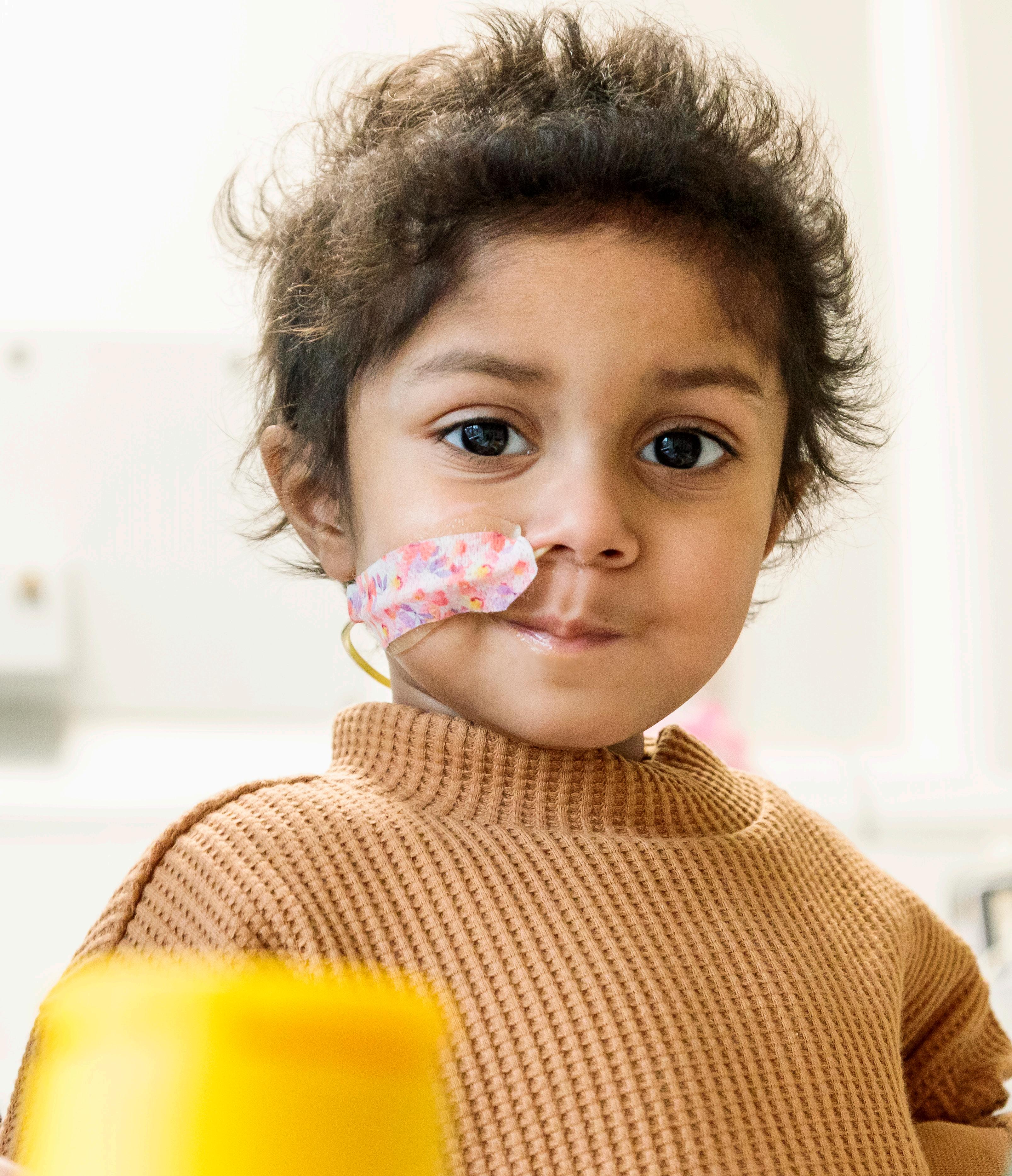
SUMMER 2023
Great Ormond Street Hospital Children’s Charity
Six-year-old
26 THE PIONEER INTERVIEW
Go inside the classroom with GOSH School Headteacher Jayne Franklin.
28 REVOLUTIONARY RESEARCH
Professor Waseem Qasim helped develop a breakthrough treatment for previously incurable leukaemia, with support from GOSH Charity.

30 WHY I SUPPORT THE CHARITY
Cycling track designer Ron Webb left a generous gift to GOSH Charity in his Will when he passed away in 2020. Pioneer shares his story – and the impact legacy donations have.
32 GOSH EDUCATION GOES GLOBAL
Through the GOSH Learning Academy, local experts are helping to improve outcomes for children around the world.
34 PARENT’S
PERSPECTIVE
Maggie-Mae was diagnosed with leukaemia soon after birth and sadly passed away when she was 18 months old. Her mum, Leah, is running the 2023 TCS London Marathon for GOSH Charity in her memory.

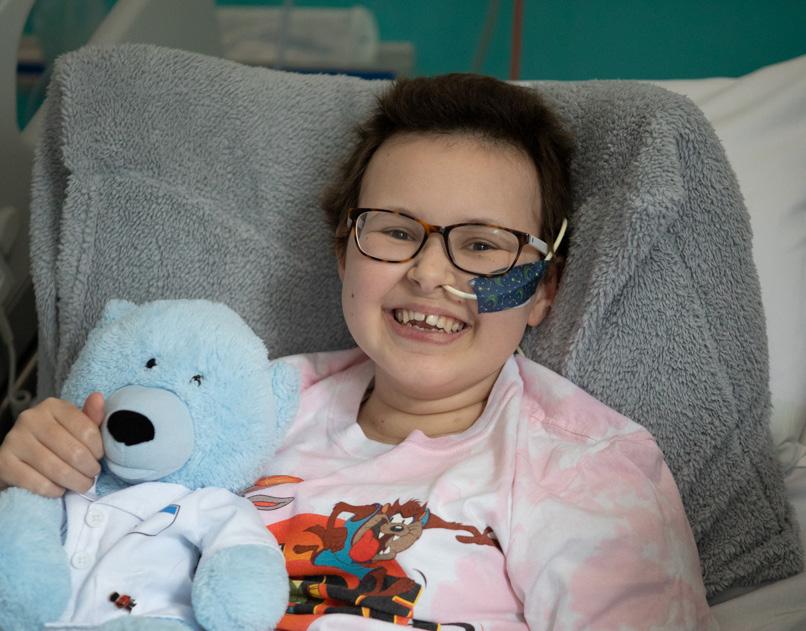
CONTENTS 04 IN REVIEW Stories from around the hospital and charity. 06 I HAD…LEUKEAMIA Yuvan was the first NHS patient to receive a new type of therapy that modifies a patient’s immune system cells to attack cancer cells. 08 CANCER BREAKTHROUGHS AT GOSH
the first bone marrow transplant for children to curing previously incurable leukaemia, GOSH has been changing the face of children’s cancer care for decades. 12 ARIANNA’S STORY
From
Arianna was diagnosed with neuroblastoma almost two years ago.
of surgery at GOSH
the tumour, her mum, Abi, shares their journey so far. 16 COVER STORY: A NEW CENTRE OF EXCELLENCE Pioneer finds out how the world-class Children’s Cancer Centre at GOSH will change the lives of young patients, their families and hospital staff. 22 MEET THE SUPPORTERS
some of the people who are passionate about helping to beat childhood cancer.
Ahead
to remove
Meet
WELCOME
Welcome to a very special Pioneer magazine. In this issue, I have the great pleasure of introducing one of the most exciting developments in the history of Great Ormond Street Hospital Children’s Charity (GOSH Charity) – the launch of our Build it. Beat it. appeal.
Every day, five families receive the devastating news that their child has cancer. A child doesn’t have to die from cancer for it to take their life. It can take away their childhood, their opportunities to learn and even to have children of their own one day.
Great Ormond Street Hospital (GOSH) sees children with the most rare and difficult-to-treat childhood cancers. We’re already pushing the boundaries. Pioneering research is underway to find the most effective treatments and cures, which give hope to children and their families.
But advances have outstripped GOSH’s current cancer care facilities, and the hospital needs a new home for breakthrough therapies. That home will be the Children’s Cancer Centre at GOSH.
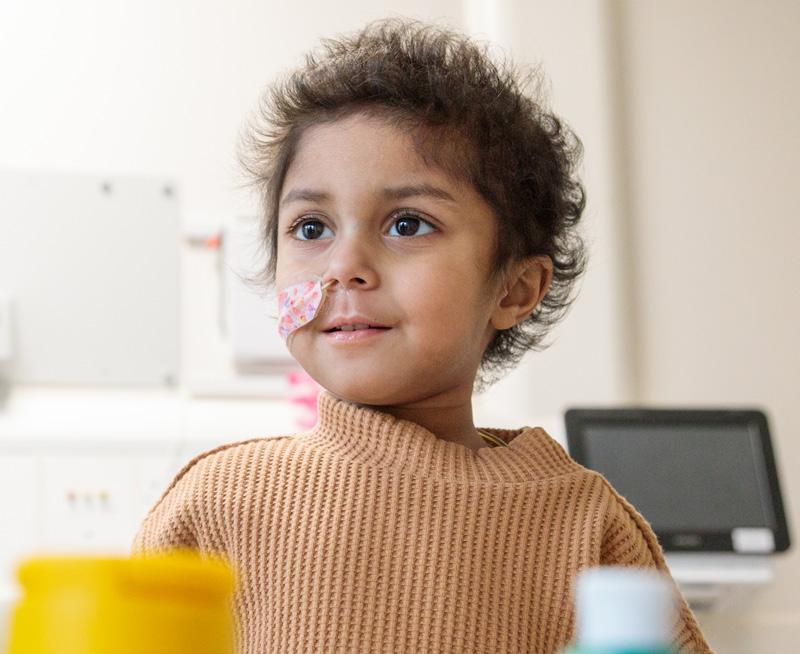
In the coming pages, you’ll read about the progress that has already been made in cancer care and treatment at GOSH, and how the new centre will help to save even more children’s lives.
Children like 13-year-old Alyssa, who was the first person in the world to receive base-edited T-cells to treat her ‘incurable’ leukaemia (read her story on page 28). Or 15-year-old Yuvan, who was treated at GOSH after being diagnosed with acute lymphoblastic leukaemia in 2014. You can read about his experience, which has inspired him to become a doctor one day, on page six.
On page 16, we take you inside the Children’s Cancer Centre, showing how it will support every aspect of care for children and their families, and on page 22, you can meet some of the wonderful people who are passionate about helping to beat childhood cancer.
Lastly, as I write this, I’m getting ready to run the 2023 TCS London Marathon as part of TeamGOSH. This will be my third marathon, and while the training hasn’t got any easier, running to raise money for the Children’s Cancer Centre makes getting out there (rain, hail or shine!) worth it.
I leave you now with this collection of stories, which I hope inspires you to learn more about the Build it. Beat it. appeal. There are so many ways to get involved, from taking on a physical challenge of your own to fundraising with family and friends or giving directly to GOSH Charity.
Help us build the new Children’s Cancer Centre at GOSH and save more children’s lives.
If you can help build it, you can help beat it.
Louise Parkes CEO Great Ormond Street Hospital Children’s Charity


On the front cover:
out how you can support
Yumna is treated for high-risk neuroblastoma at GOSH.
appeal Find
our
PIONEER 3
IN REVIEW
STORIES FROM AROUND THE HOSPITAL AND CHARITY
THANK YOU FOR SUPPORTING OUR STOCKING APPEAL
GOSH Charity’s 2022 Christmas Stocking appeal raised an astonishing £1.7 million thanks to our incredibly generous supporters.
Launched in October, the Stocking appeal raised funds to help get children one step closer to home at Christmas, and to help GOSH feel like a home from home for the children who were too ill to leave the hospital for the festivities. This includes children like Henry (the star of our Christmas campaign, above) who spent his first two Christmases at GOSH.
Doctors discovered two holes in Henry’s heart shortly after he was born, and he was diagnosed with long segment tracheal stenosis and left pulmonary artery sling. This meant his windpipe was much smaller than it should have been, and his left pulmonary artery was wrapping around his windpipe.
Henry first arrived at GOSH on 23 December 2017 for surgery, but still had presents to open from the GOSH Play team on Christmas Day! After some setbacks, Henry also spent his next Christmas at GOSH.
Henry’s mum, Shevonne, recalls how the staff at GOSH helped make his Christmas special: “They dressed up on Christmas Day and there were decorations wherever you turned. It was heart-warming to know donations had been made to go towards giving seriously ill children the Christmas they deserve.”

As part of the Stocking appeal, supporters could also send a special Christmas message to the children, families and staff at GOSH over the festive period. Stockings with heartfelt and personal messages of support arrived by the sackful, spreading festive cheer and showing just how wonderful our supporters like you are.
The money raised helped GOSH Charity fund the vital resources and support GOSH needs to help children get home for Christmas, and to make the festive period as magical as possible for those still in hospital. Thank you again to everyone who supported this appeal.
1
4 PIONEER
NHS CELEBRATES 75 YEARS
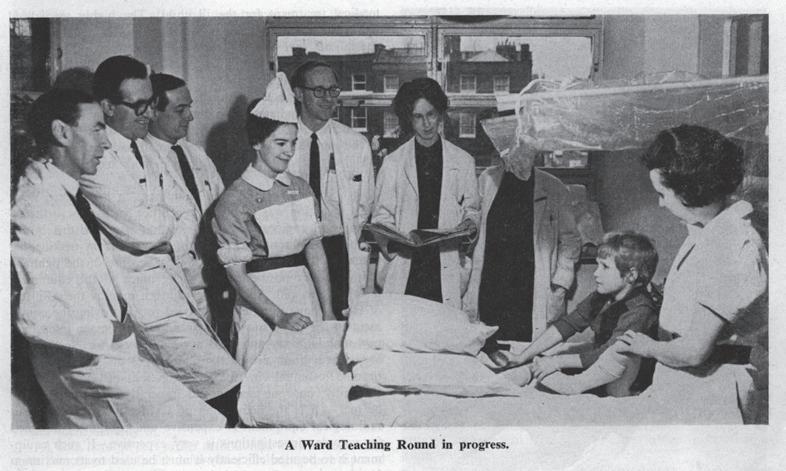
The NHS will mark 75 years of service on 5 July. Treating 1.3 million people a day in England, the NHS touches the lives of everyone, and it is hard to imagine life without it.
GOSH became part of the NHS on its formation in 1948. For the first time, hospitals, doctors, nurses, pharmacists, opticians and dentists were brought together under one umbrella to provide services for free at the point of delivery.
To mark the anniversary, GOSH and GOSH Charity will celebrate the difference the NHS has made to the hospital, as well as shining a light on the staff who guide, support and care for patients every day.

Keep your eyes peeled for events and updates on the celebrations at gosh.org
3 PLAY OUR SPRING RAFFLE
Our annual Spring raffle is now live, and you could win up to £5,000 cash! There are 103 fantastic prizes up for grabs, and the money raised will help children like Marnie, who was diagnosed with a rare condition called Langerhans’ cell histiocytosis (LCH) just before her third birthday.
LCH, which affects one in a million people, is a condition where the immune cells that help fight infection in the skin spread to healthy parts of the body, where they can cause damage by overgrowing into tumours. Marnie is currently treated by the oncology team at GOSH, where she has chemotherapy and steroids, and is also part of a clinical trial which involves monthly infusions to strengthen her bones.
Every ticket you buy helps doctors battle the most complex illnesses and helps to fund groundbreaking research and advanced equipment. Our Autumn 1973
raffle last year raised more than £280,000 – just imagine the difference that will make to seriously ill children like Marnie. And don’t forget, as well as the top cash prize of £5,000 there are many other prizes to be won.

THIS TIME IN
GOSH’S HISTORY
The first dedicated cancer inpatient unit was established at GOSH, led by Dr Judith Chessells, who went on to set up the first UK-wide Children’s Cancer Study Group to promote research in 1977.
Head to gosh.org/raffle to play today!
2 PIONEER 5
I HAD… LEUKAEMIA





Yuvan was diagnosed with acute lymphoblastic leukaemia in 2014, when he was six years old. In 2019, he was the first NHS patient to receive Kymriah, a new type of CAR T-cell therapy that modifies a patient’s immune system cells to attack cancer cells. Now 15, Yuvan is in remission and wants to become a doctor. He shares his story with Pioneer.
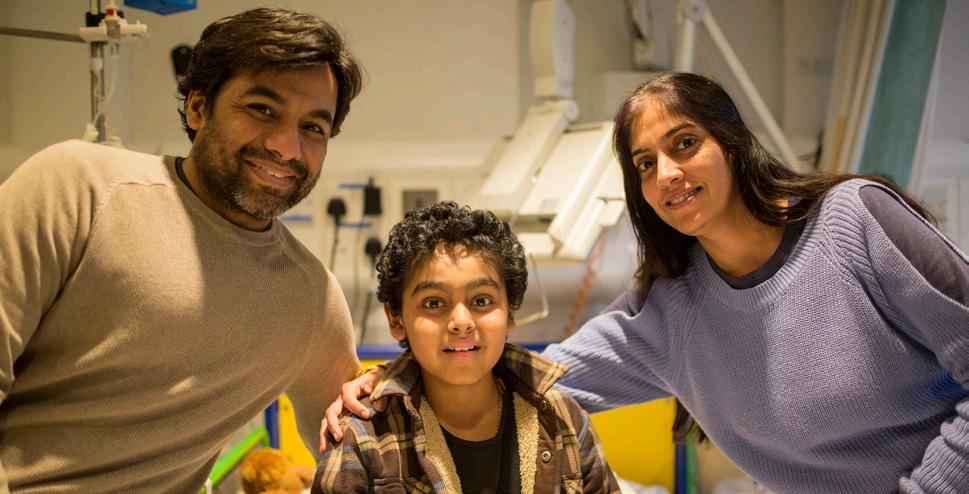

I don’t remember much about being in hospital, just a few glimpses of memories. My journey began with a trip to the GP. They sent us to Watford General Hospital, where they did numerous tests, then sent us to GOSH. We were in the dark.
My treatment started with chemotherapy, and I vividly remember a few of the infusions, including a royal blue drug. One thing I can distinctly recollect was that they told me the chemotherapy didn’t work, which I didn’t make much of at first. This was about two years in.

6 PIONEER
Yuvan with his parents at GOSH
It had all been going quite well until the doctors said the leukaemia had come back and we had to try a different treatment. I was distraught and had many questions.
The next step would usually be a bone marrow transplant (BMT), but I didn’t qualify as I was too ill, and the leukaemia was constantly spreading. So the consultants suggested we try a trial CAR T-cell treatment. I had no side effects and was discharged from hospital after a few months – it was by far the smoothest treatment of them all. However, around six months later the leukaemia relapsed. The only upside of this was that I then qualified for BMT.
BMT was the most physically difficult experience. The radiation wore me out, the drugs gave me the worst nausea and I lost my appetite. I was in hospital for nine months after the transplant, but unfortunately, I relapsed again.


In January 2019, I was the first NHS patient to receive a new CAR T-cell treatment called Kymriah. I can’t recall any of it, but from what I’ve heard from my parents, it was really hard. I couldn’t remember anything, not even my own name! Luckily, those side effects started to die down and I was discharged about two months afterwards. Now, I only go back to GOSH for yearly check-ups.
SUPPORT FROM GOSH CHARITY
I was in hospital for an extremely long time, and I always wanted both my mum and dad to be with me, but only one parent is allowed to stay in your room. My dad was given family accommodation, which is funded by GOSH Charity, that was really close by. It was the best thing because often I couldn’t sleep at night, so my dad could binge-watch movies with me until late without having to worry about travelling home. I also had food cravings, and my parents used the kitchen in the accommodation to cook some of my favourite meals and bring them to the hospital for me.
LIFE NOW
KEEPING BUSY
The Play team [which is fully funded by GOSH Charity] really, really supported me throughout my time in hospital. They would pop in and play card games and board games with me and would always have something for me to do. This really helped to divert my mind while I was having treatment. When I could, I also did schoolwork every day, which kept me entertained and distracted – at least for an hour!
Music also helped pass the time. My dad would bring a speaker into the hospital, and he’d play various tunes that I would listen to for hours on end. It was quite calming.
During one of my treatments, the Play team gave us the opportunity to experiment with 3D printing. We would design something on an iPad and a designer would then print it using a 3D printer. That was really cool. You could print anything – it could be something useful like a phone stand or even just an action figure.
I recently went on my first international trip since having Kymriah. We went to San Francisco, and it was great. It was a wonderful experience to be abroad after such a long time. Going back to school in person was very weird at the start, because I hadn’t been for so long. But once I got used to it, it felt really good to be back. My favourite subjects currently are computer science, art and maths.

I’m thinking about two career choices: either medicine or computer science. I’m still deciding which way to go. But wanting to be a doctor comes from my experience at GOSH.
I’ll never forget the doctors and consultants who would sometimes make arrangements so I could do some of my treatments at home. They were very supportive and understood what I was going through. I am extremely grateful to them! •
Yuvan on holiday in 2022
PIONEER 7
I’ll never forget the doctors and consultants [at GOSH] They were very supportive and understood what I was going through.
PIONEERING CANCER CARE AND TREATMENT
Cancer occurs when something goes wrong with the genetic code inside cells (DNA), causing them to multiply out of control. This can happen to any type of cell in the body, from skin cells to brain cells. Cells that divide frequently are the most likely to become cancerous, because the more they divide, the more chances there are of errors creeping into DNA.
GOSH is often the last hope for children with the rarest and most complex types of cancer, including blood cancers like leukaemia and tumours growing in delicate areas of the body, such as the spinal cord. The most life-threatening are those cancers that come back after treatment, or that don’t respond to treatment at all.
Treatment usually involves a multi-pronged approach, which could include radiation therapy, drugs infused into the body or surgery to remove cancerous tissue, among others. As research progresses, treatments are becoming more tailored to the specific cancer type.
LEADING THE WAY
In the 1960s, fewer than one in 100 children with leukaemia survived the disease for four years or more. Children with neuroblastoma, an aggressive cancer that causes tumours to grow in nerve tissue outside of the brain, had less than 7% chance of surviving more than two years after their diagnosis.
By 1971, thanks in part to the efforts of clinicians in the UK’s first leukaemia research unit at GOSH, survival rates for childhood leukaemia in the UK had increased by three times. And GOSH’s bone marrow transplant program, launched in 1979, helped even more children survive. Two decades later, GOSH clinicians took this
further, making bone marrow transplantation safer and more accessible to children who were too sick for standard treatment.
Today, survival for children diagnosed with acute lymphoblastic leukaemia (ALL) is over 90%. ALL affects around 400 children a year in the UK and, while most can be cured with treatments such as chemotherapy, in some patients it comes back. This relapsed ALL is the most common cause of cancer death in children in the UK.
CAR T-cells, which are immune cells that have been reengineered with a cancer ‘detector’, allowing them to find and destroy cancer cells, have shown great promise for relapsed ALL, and GOSH researchers are leading the way in this area. In 2015, GOSH Charity part-funded a CAR T-cell clinical trial in patients with relapsed ALL. It also funded research into gene editing, which will mean CAR T-cells can be donated from one patient to another.
Researchers are also working to tackle solid tumours, and a team, part-funded by GOSH Charity, has developed a special molecule that instructs T-cells to recognise a protein that is only present on the surface of neuroblastoma cancer cells. The researchers have shown this works, leaving healthy cells untouched, and are now planning a clinical trial of CAR–T cell therapy for children with difficult-to-treat neuroblastoma.
VISION FOR THE FUTURE

Despite advances, cancer is still the biggest killer of children aged one to 14 in the UK, and children’s cancer rates are going up, not down. Since 1993 they

8 PIONEER
have increased by 12%, and children with some of the hardest-to-treat cancers still have a less than 2% chance of survival.
A child doesn’t have to die from cancer for it to take their life. It can take away their childhood, their innocence, time spent with family, their opportunities to learn and even to have children of their own one day. Many children face life-long challenges, such as tremors, seizures, learning difficulties and physical disabilities. It’s a stark reminder that, despite incredible progress, there’s still a long way to go to reduce the burden of this devastating disease.
The current children’s cancer unit at GOSH is already the largest in the UK, receiving up to 400 new children every year. These children come from across the UK and the world with some of the most challenging cancers.
But the rapidly changing pace of cancer medicine has outstripped GOSH’s existing cancer facilities, with some outpatient cancer clinics currently in buildings from the 1930s. Services are scattered across the hospital campus, which can mean multiple moves and upheaval for children and families at an already distressing time, as well as clinicians wasting time travelling between appointments. Crucially, the current facilities don’t allow for the best possible use of new technology and digital capabilities.
That’s why GOSH Charity is helping to build a worldleading Children’s Cancer Centre at GOSH. A place where new treatments help more children get better. A gateway for children to go on to better futures, where they not only survive, but flourish. •
DEVELOPING NEW TREATMENTS


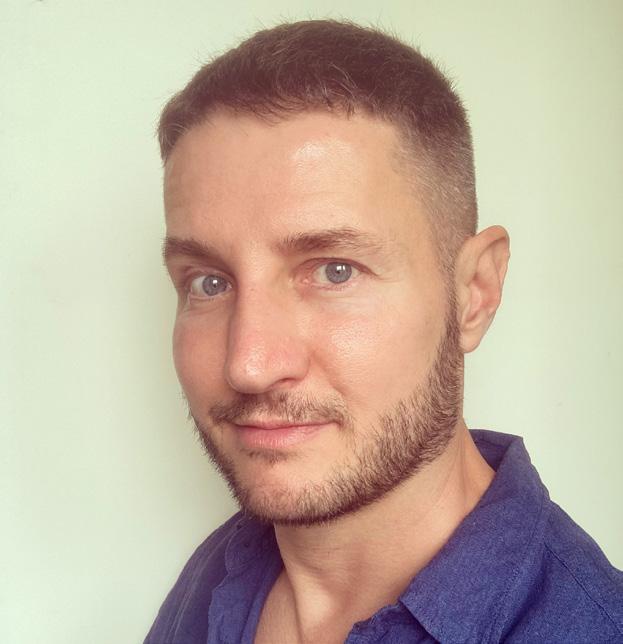


Dr Robert Chiesa, GOSH consultant in bone marrow transplantation and CAR-T cell therapy, shares how the new Children’s Cancer Centre will help researchers and clinicians do even more for children with cancer.
“I have worked with children with cancer for the past 20 years, including 14 years at GOSH. Although it’s hard to see children suffering, it’s rewarding to know that through bone marrow transplantation and CAR T-cell therapy, we can offer more treatments to children and give them a chance.
“Because GOSH is an institution that puts a lot of emphasis on research, we can now offer novel treatments that were not available even five years ago. Research and science in our field has saved many lives. Although there might not be a treatment today for a specific type of patient or disease, in the future, we might find a clinical option and therefore give hope to families. This is a powerful driving force – we’re always trying to come up with something new that will help another group of patients. The new centre will allow us to do more of this research.
“Children admitted to the bone marrow transplantation and CAR T-cell therapy unit are among the sickest children in the hospital outside of intensive care, and they often need to stay for months. The Children’s Cancer Centre will give children and their families a better quality of life, with improved living areas and common spaces for parents. We will also have more beds available, which means we’ll be able to treat more children.“
PIONEER 9
A (BRIEF)
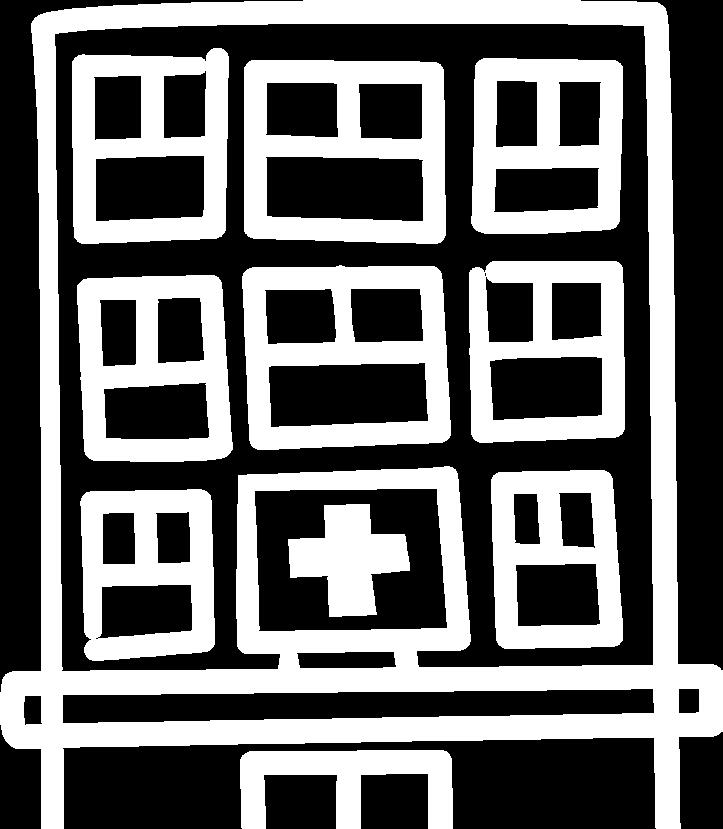


HISTORY
CANCER BREAKTHROUGHS AT GOSH
OF
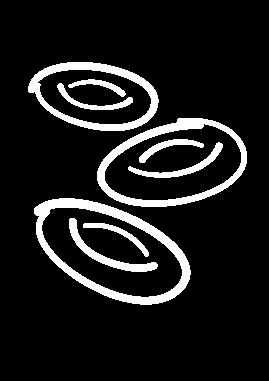
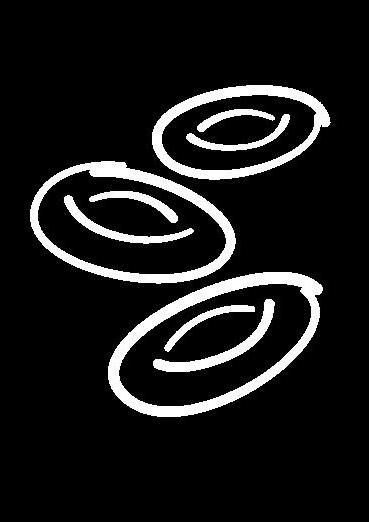
become a driving force behind remarkable changes in children’s cancer care.
1852
The Hospital for Sick Children (now GOSH) opens on 14 February.
1970
Long-term leukaemia survival rates increase by three times that of the 1960s.

1961
The UK’s first leukaemia research unit opens at GOSH.
1977
Hospital consultants set up the first UK-wide Children’s Cancer Study Group to promote research.
2013 2022

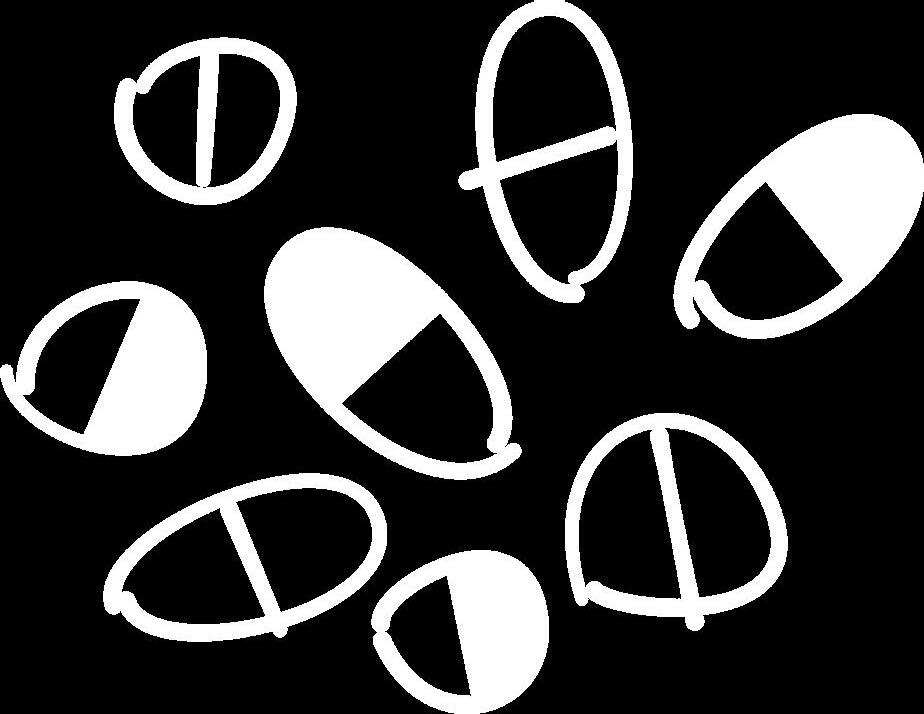



One of the first European CAR T-cell studies launches, pioneered by Professor Persis Amrolia, paving the way in this rapidly emerging field.
Results of a clinical trial at GOSH suggest a new CAR T-cell therapy has fewer side effects and could be more effective at treating ‘incurable’ acute lymphoblastic leukaemia (ALL) than similar treatments.
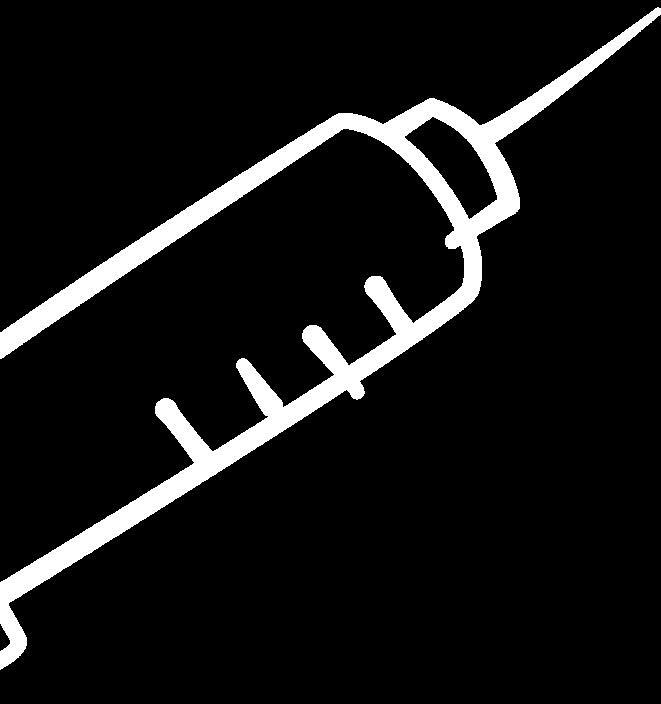
2020 2018
Eleven-year-old Yuvan becomes the first NHS patient to receive CAR T-cell therapy. Read Yuvan’s
Dr Owen Williams plans to initiate the UK’s first trial of an




The First Phase 1 trial for CAR T-cell therapy for diffuse midline glioma – an aggressive tumour of the brain and spinal cord – begins.
GOSH immunologist Professor Waseem Qasim uses CAR T-cells to treat a one-year-old patient with ‘incurable’ leukaemia. Read more about Waseem on page 28.
2015
ARIANNA’S TIME AT GOSH
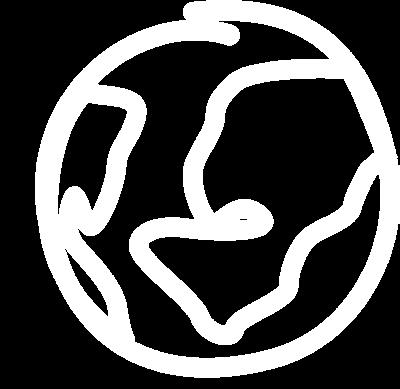


Six-year-old Arianna was diagnosed with neuroblastoma, a rare type of cancer that forms in nerve tissue, almost two years ago. Ahead of surgery at GOSH to remove her tumour, Arianna’s mum, Abi, shares their journey so far.



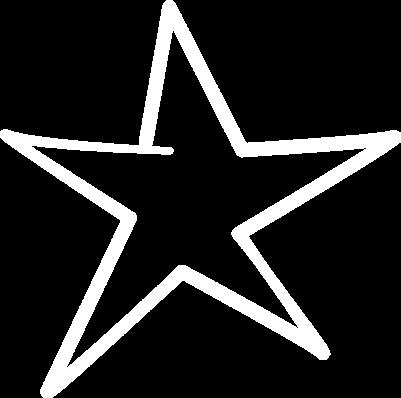
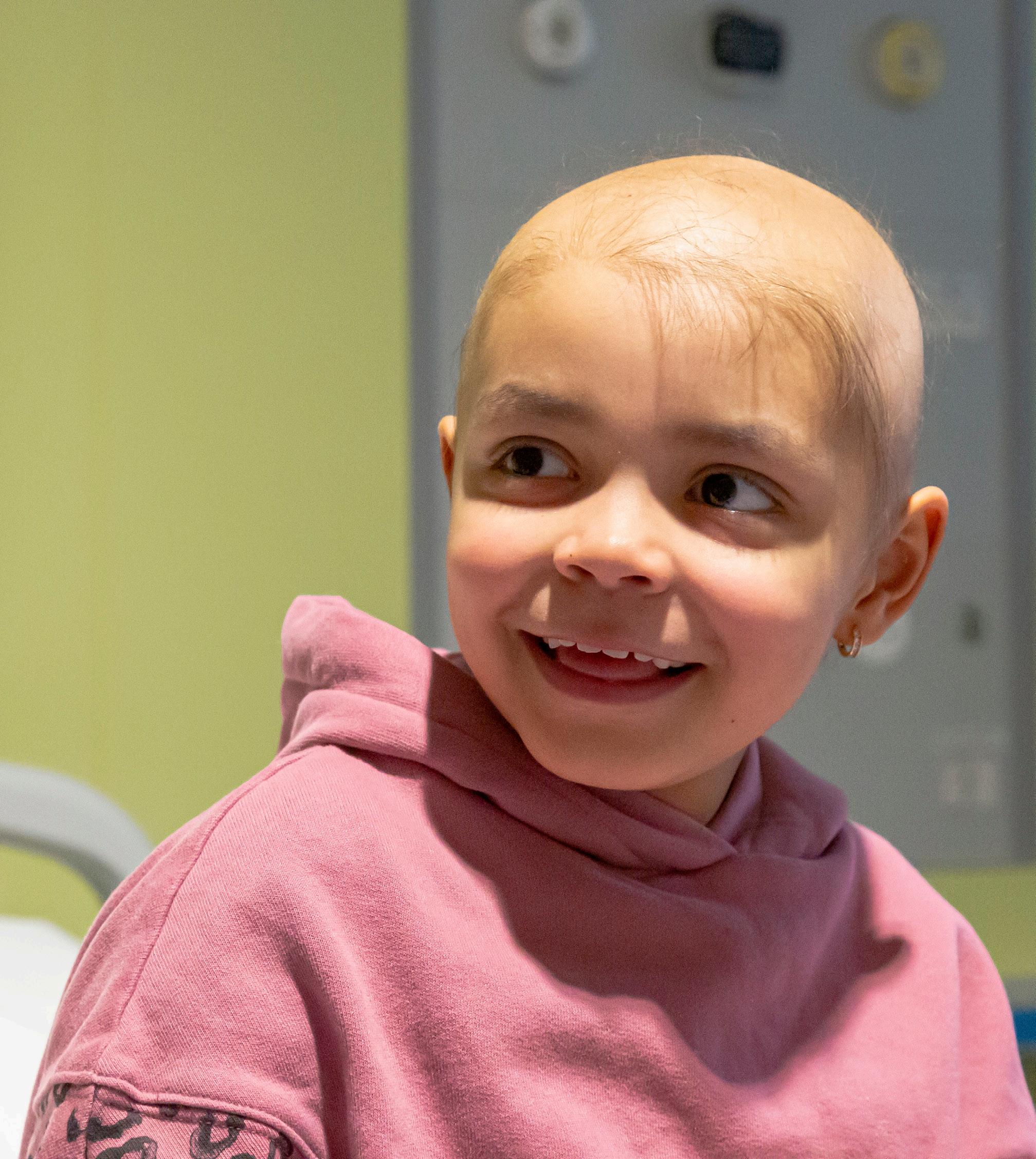
12
PIONEER
One morning in July 2021, Arianna woke up with upper back pain. This was unusual, but I didn’t think much of it, as she was still going to school and doing her normal activities. A week later her back was still sore, so I took her to an osteopath, who thought it was just muscle tightness.

A few months later, we went to a birthday party, and I noticed Arianna wasn’t getting involved. I called her over and she started limping towards me, so I took her to A&E. They said she had a urine infection, which would explain the back pain. But this pain was getting worse, and we had to go to A&E eight times that month.
I knew it was something serious, and my motherly instincts kicked in. After an ultrasound, the doctors discovered that Arianna had cancer. Before long she was diagnosed with high-risk, stage four neuroblastoma.
We were in shock. When you hear of cancer in children, you never expect your child is going to experience it. I was pregnant at the time, with two other children at home, and our world was suddenly turned upside down. It’s a feeling that no one should ever experience.

My first reaction was to be with Arianna, to cuddle her and to make her feel better about everything. I wanted to know how to get her the right treatment, because I knew she needed something to save her life.
STARTING TREATMENT



We were transferred to GOSH two days after Arianna was diagnosed. The doctors and nurses there were so friendly from the second we walked through the doors.
Immediately, a Play Specialist came and sat with Arianna, which was amazing. She was able to relax and have fun, because she was playing all the time. The Play team [which is fully funded by GOSH Charity brought lots of activities into our room. That was a really positive experience for us, because we got to see Arianna smiling.
The consultant said Arianna would have an MRI scan the next day, and she would start chemotherapy immediately. At this point, Arianna couldn’t walk as she was in so much pain. Within a week, she had gone from running around to nothing at all.
Neuroblastoma is a rare, aggressive type of cancer, which sits just above the kidneys and on the adrenal glands. It’s not solid, so even doing a biopsy could
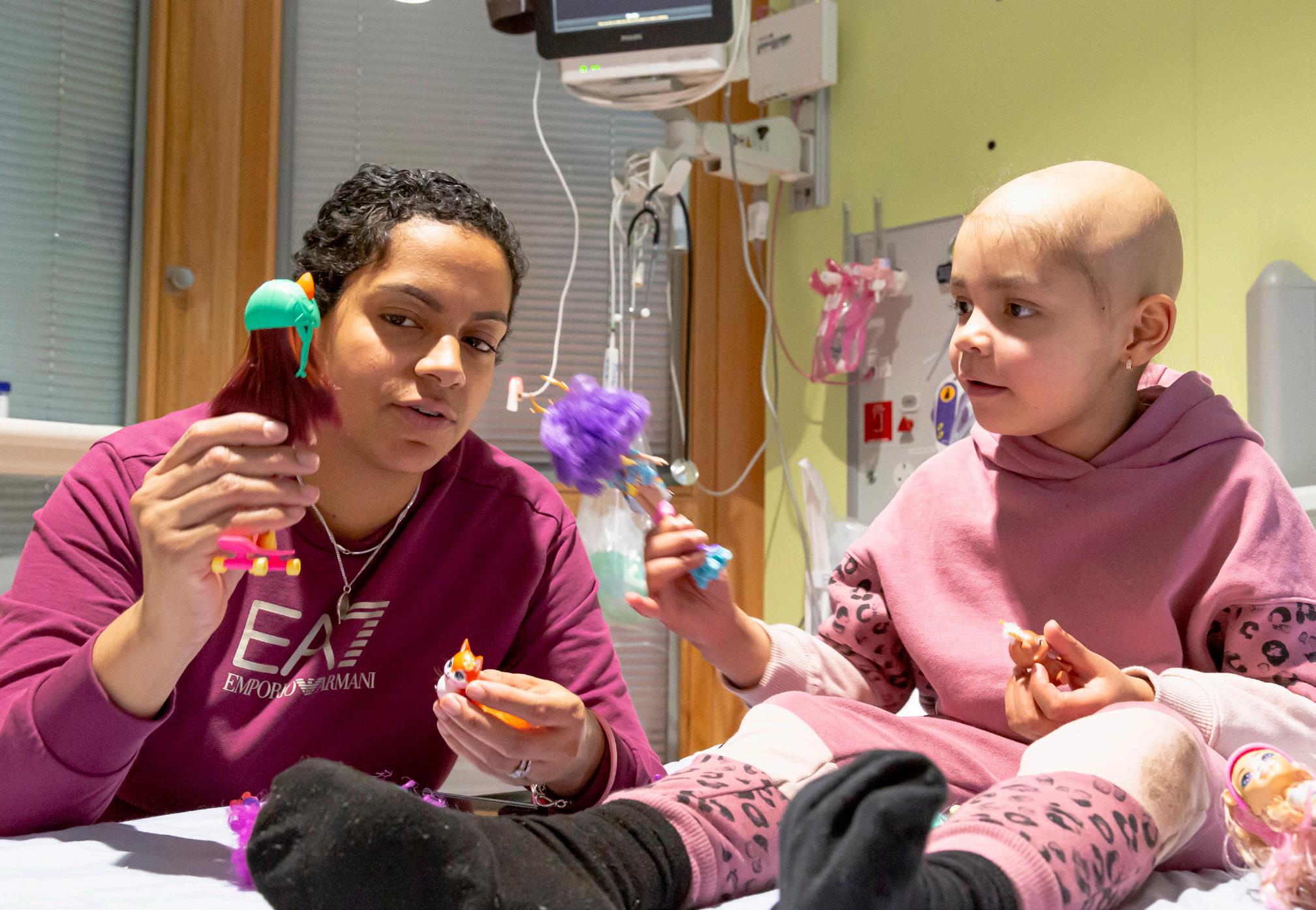
PIONEER 13
The cruellest thing about cancer, particularly for children, is it takes away their childhood.
THE POWER OF PLAY
As a Play Specialist, Alanna Rudd helps children make sense of their treatment and recovery through toys, activities and fun. She tells Pioneer about the role of the Play team in the lives of children like Arianna.
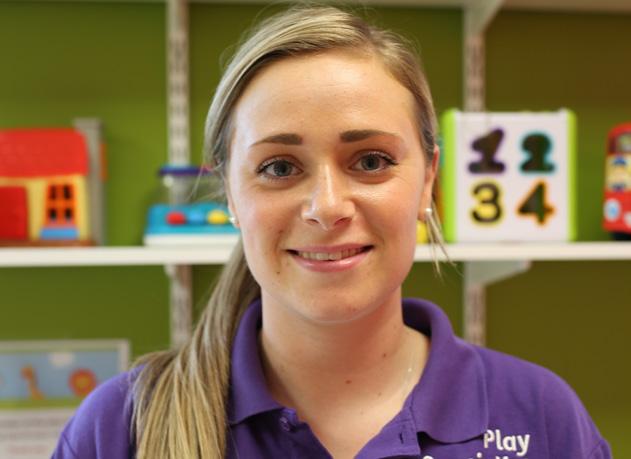
“We support children through procedures by using playful resources to provide a distraction, as well as helping to explain their diagnosis and treatment in a child-friendly manner. We also support parents and siblings, as being in hospital can impact the whole family.
“For children like Arianna who are diagnosed with cancer, we support them through every step, from explaining what to expect during a scan, to helping prepare them for losing their hair.
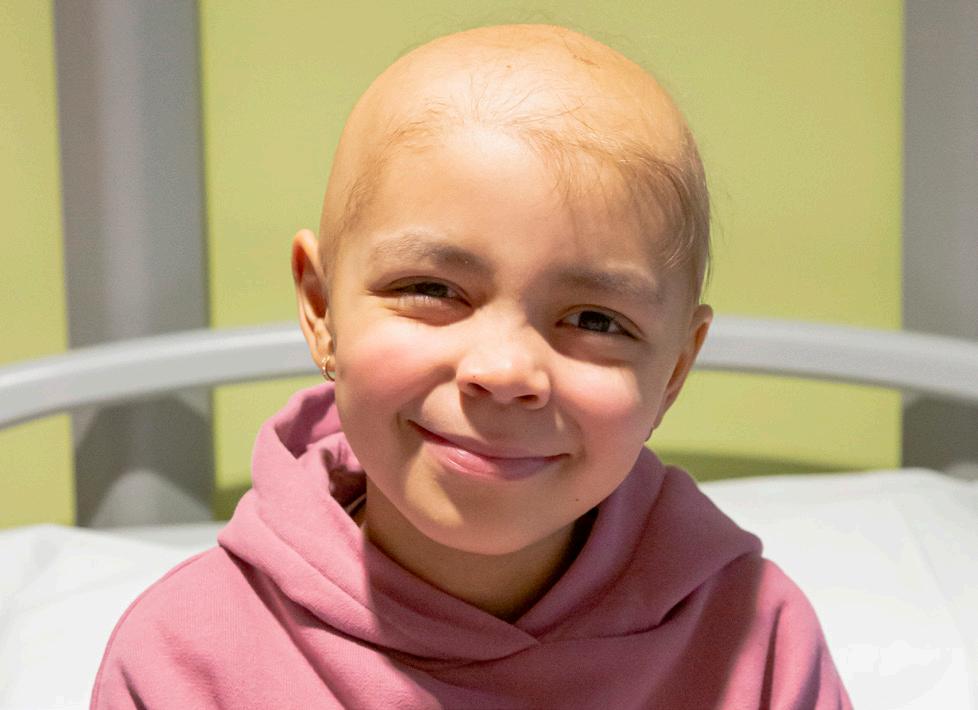
“Play is important because it’s the way children explore, learn and communicate, and it also aids their development. It helps to alleviate boredom and boost their emotional wellbeing.
“Our role is rewarding in that we build relationships with children and families, and seeing the difference we can make is huge. Supporting families through end-of-life care is also important; trying to bring comfort and enjoyable moments to children, and also creating precious memories for the family to cherish.
“I hope the children and families we support come away with some positive memories from their time at GOSH. We understand it’s incredibly stressful, but if we can bring a little bit of light into their lives, then it makes our jobs worthwhile.
“Without continued support from GOSH Charity’s donors and fundraisers, we would not be here. The Play team wouldn’t exist, and we wouldn’t have access to all the wonderful resources that help make children smile.”


make it spread instantly. The prognosis is a 50% survival rate. Even with that survival rate, the chance of relapse is 60%. It’s one of the most aggressive cancers a child can have.
Arianna had eight rounds of intense chemotherapy every 10 days, with scans in between to ensure the cancer wasn’t progressing and the treatment was working. By the end, we received the news that the tumour had amplified, which meant that the disease was stubborn, and not clearing as fast as we hoped. Arianna then had a stem cell rescue, where her stem cells were harvested and stored to put back into her body at a later stage.
After that, she had four rounds of a different type of chemotherapy and immunotherapy, which we were lucky to get at GOSH. Once you’ve had one chemotherapy treatment, you can’t repeat it as the cancer will become immune.
Unfortunately, the disease still didn’t clear, so Arianna was accepted onto a trial at University College London Hospital. We were due to have five rounds of treatment, but after one round the tumour shrank. It was amazing!
We’ve now moved on to the next stage, which is more chemotherapy and replacing her stem cells to clear any remaining disease. It comes with a lot of side effects, both short- and long-term, which are just unimaginable.


GOSH means so much to us, and the hospital will always have a special place in my heart. To have a new, world-leading Children’s Cancer Centre will be incredible.
14 PIONEER
ONGOING IMPACTS


The cruellest thing about cancer, particularly for children, is it takes away their childhood. It takes away their lives. When we FaceTime Arianna’s friends, it’s lovely, but she also sees that they are doing normal things, things she can no longer do. She does get upset about that.
It was tough to experience Arianna losing her hair. She’s a princess, and she used to wake up every day and say, “Can I have my hair in an Elsa plait today?” When it happened, she was in a state. “I’m not pretty, I don’t want to see anyone,” she would say. So my sister and I shaved our hair, too, because we didn’t want her to feel alone.
Thankfully, there are times when Arianna is really positive. We call her our Wonder Woman because what she does is amazing. Despite the treatment, she is still dancing, laughing and smiling. And even when she’s really unwell, she’ll still play tricks on you. She also wears a Wonder Woman costume to go into every scan and treatment. I think she really does feel like a Wonder Woman!
She’s hilarious and has the best personality. But if I had to choose one word to describe her, it would be


“kind”. When we come home from hospital, she always wants to give her siblings a gift, which is very sweet.
My hope for Arianna’s future is that she can be a normal child. We know that she will be affected when she’s older; she’ll probably be infertile, and we had ovary preservation to try and preserve one of her ovaries. But all we hope for now is that she can grow up to live her life to the fullest.
GOSH means so much to us, and the hospital will always have a special place in my heart. To have a new, world-leading Children’s Cancer Centre will be incredible. I can’t put into words how it would feel to have more space, bigger playrooms and outdoor areas. It would make the children feel free, as well as giving a bit more freedom to the parents. For any family coming into that space, you want it to be a homefrom-home experience. That’s what I would want for anyone going through this.

To know people are actively raising money for the Children’s Cancer Centre is amazing, as it will help so many families, including my own. I appreciate it so much, and really encourage people to fundraise, no matter how big or small. •


PIONEER 15
INSIDE THE CHILDREN’S CANCER CENTRE
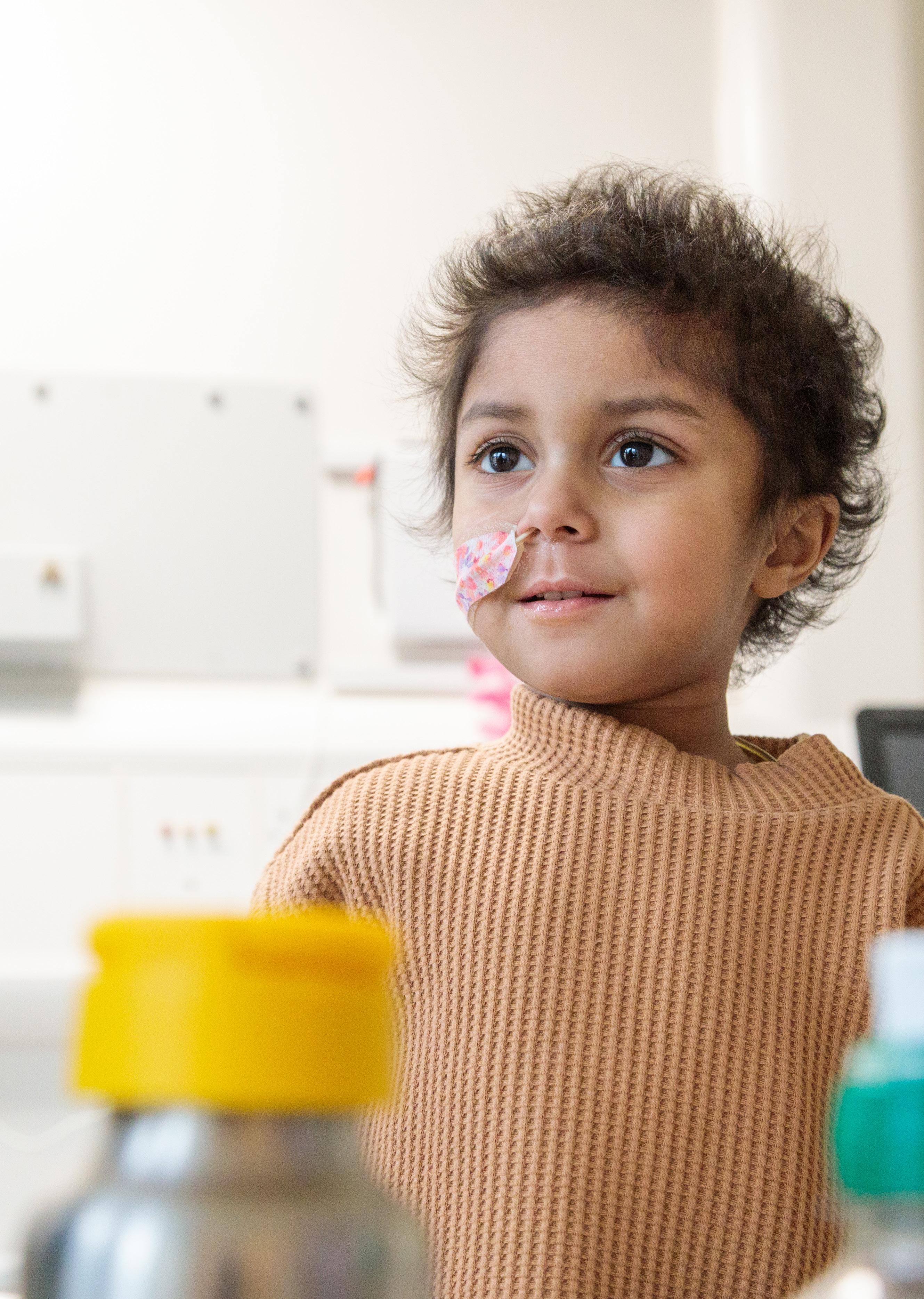
The Children’s Cancer Centre at GOSH will change the lives of young patients, their families and hospital staff.
Pioneer finds out how.
GOSH has been constantly evolving since it opened in a Georgian townhouse on Great Ormond Street in 1852. From just 10 beds and two physicians, it has become one of the world’s leading children’s hospitals and is home to vital advances in paediatric medicine and care, impacting children across the UK and the globe.
From the opening of the Zayed Centre for Research into Rare Disease in Children in 2019, to the Sight and Sound Centre, supported by Premier Inn in 2021, the hospital continues to create the innovative spaces that will help build a better future for seriously ill children. Much of this work is supported by GOSH Charity.
The Children’s Cancer Centre is the next stage in GOSH’s redevelopment journey. The first phase will involve deconstructing the existing Frontage Building before construction can begin. The construction programme is predicted to last for around three years, with the team working hard to ensure work can begin as soon as possible.
Sustainability is a vital aspect of the project, with plans to use renewable energy. The centre has also been designed to integrate with existing buildings, and plans are in place to mitigate disruption as much as possible during construction. Children across the hospital will benefit from the development, and young people are being included during every step of the project to ensure it meets their needs.
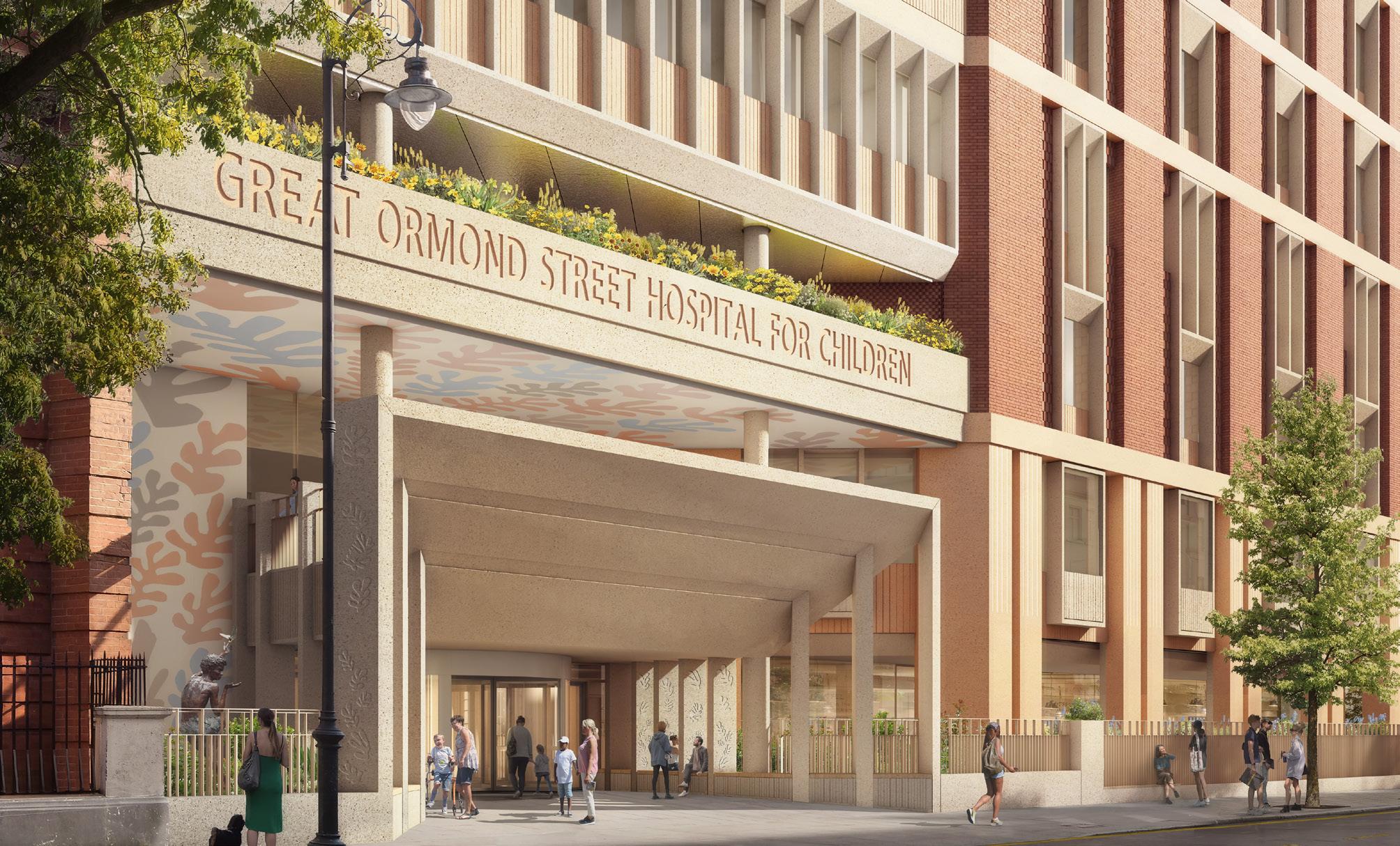
The new building will provide holistic, personalised and coordinated care for children across their entire treatment journey. This includes:
• inpatient wards tailored to children with cancer, including spaces for patients undergoing bone marrow transplantation
• increased access to clinical trials for families with few treatment options, and more research into kinder treatments with fewer long-term side effects
• a new critical care unit with on-site accommodation, so families can stay together
• an increased focus on nutrition, physical activity and wellbeing to support children’s recovery
• new imaging technology that improves diagnostic capability by better revealing what’s happening inside cancer cells
• a new hospital school, with more space and upgraded facilities
• outdoor spaces, including a roof garden, where children, families and staff can connect with nature
PIONEER 17
An artist’s impression of the centre, which will include a new main entrance at GOSH
PUSHING THE BOUNDARIES
Dr Emma Stockton is an anaesthetist at GOSH and Chair of the Children’s Cancer Centre clinical working group. She shares how the centre will change lives.

“It’s easy to build a building, but it’s the frontline workers who know what will work and what won’t. That’s why I wanted to be involved, to help ensure the new centre is a space that will transform how we care for children and their families, now and into the future. We have a whole team, including doctors, nurses and physiotherapists, helping to build the vision.
“While the medicine and cuttingedge research is really important, there are holistic things, too. For example, physios are keen on getting children active, because we know that children who are diagnosed with cancer decondition. So we want a building that encourages activity. We also need to think about nutrition, because so many of our children develop food aversion.
“Cancer is the leading cause of death in children, but there are also children who grow into adulthood having had cancer with less-than-ideal outcomes. There’s having a cure, and then there’s having a good cure. We need to be ambitious. I want us to shine a light on new ways of doing things, really pushing boundaries and working together to deliver the very best care for children and their families.
“We need people to get behind the Children’s Cancer Centre and believe in it. Yes, we need donations, but we also need hearts and minds. It’s not just about the building – it’s a collective ambition for health care and to give children and young people access to the very best.”
CYTOTOXIC PHARMACY
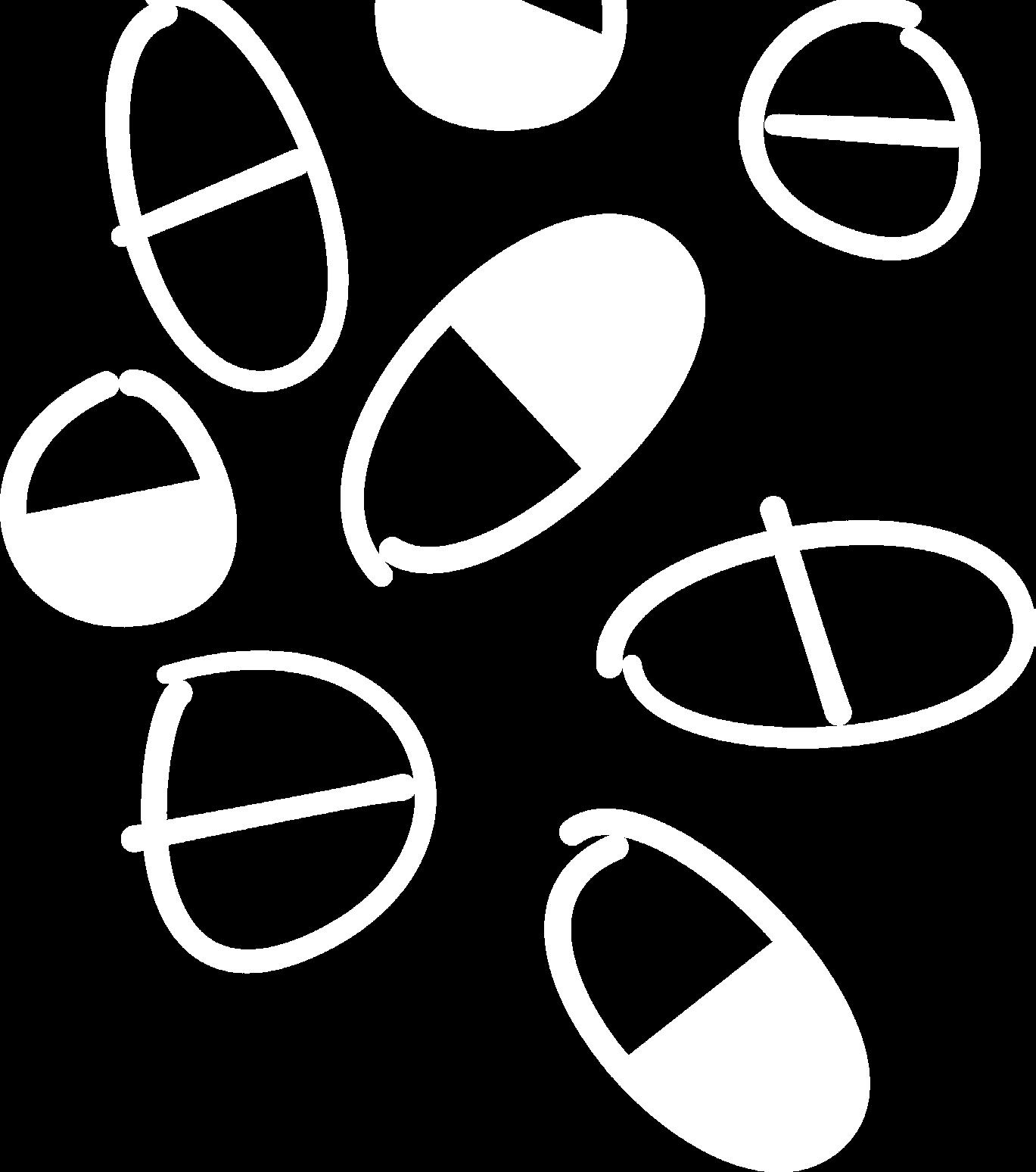
A cytotoxic pharmacy unit is crucial for cancer care. It’s a place where drugs that kill cancer cells – called cytotoxic drugs – can be made properly and safely.
Cytotoxic drugs, like chemotherapy, are prepared on-site at GOSH, so they can be tailored to each child. While GOSH’s current cytotoxic pharmacy is operational, it’s small and cramped. It is also away from the hospital’s day care unit, where cancer drugs are often administered to children.
In the new centre, a purpose-built cytotoxic pharmacy will be located near the day care unit, helping to reduce waiting times for medication. A larger space also means new, upgraded equipment can be installed and staff can do their work in optimal conditions.
DAY CARE UNIT
The current cancer day care unit at GOSH is in the 1930s Southwood building. Due to its age, it is not an ideal environment for children, their families and staff, and it isn’t equipped to keep up with advances in medicine or technology.
Day care is an essential part of cancer care and, with the number of childhood cancer cases increasing, GOSH needs to increase its capacity to meet future demands. The hospital is also moving towards an ambulatory care model, which is where care is provided to children as outpatients or in a day care setting. This means children and their families can spend less time in hospital and more inpatient beds will be available for those who need them.
As well as increasing the number of beds, the new day care unit will feature innovative technology to help keep families and care teams connected and to enhance care.
18 PIONEER
HOLISTIC CARE
Children with cancer can spend weeks, months or even years in hospital undergoing treatment. For these children, GOSH is a true home away from home and, for some young patients, it’s all they have known. This makes it vital that the Children’s Cancer Centre treats the child, not just their disease.
This includes providing access to outdoor spaces, including balconies and a rooftop garden, which have been proven to reduce a patient’s length of stay in hospital. A new hospital school for all GOSH patients, with double the space and upgraded facilities, will ensure children aren’t disadvantaged while undergoing treatment. There will also be an increased focus on nutrition, with proposals for a greater variety of meals, and spaces where children can eat with their family.

A FOCUS ON RESEARCH

Fifty years ago, 40% of children diagnosed with cancer survived. Today, that figure has more than doubled. But survival rates don’t reflect the reality of what it’s like to live with the long-term side effects of treatment, and many children face physical, mental and emotional challenges that follow them into adulthood. Research is desperately needed so children can go on to thrive, not just survive.
Together with the UCL Great Ormond Street Institute of Child Health, GOSH is one of the few places in the world where research and clinical care happen sideby-side, quickly translating breakthroughs in the lab into real benefits for children with cancer.
GOSH is already home to many breakthroughs, and the Children’s Cancer Centre will allow even more groundbreaking research to take place. More space will mean a greater capacity for clinical trials, and the intention is that every child with cancer at GOSH will have an opportunity to participate in research.
PIONEER 19
An artist’s impression of the centre’s rooftop garden
YUMNA’S STORY
In November 2021, just two weeks after Yumna’s birthday, I found a lump on the side of her tummy. In hospital, the doctor found a mass, and we were transferred to GOSH.
After a biopsy, we were told that Yumna had stage four high-risk neuroblastoma. We were in utter shock, and everything felt so surreal. We immediately started on induction chemotherapy. By the third cycle, Yumna started losing her hair. She wouldn’t speak during that time at all, and she didn’t like looking in the mirror or FaceTiming anyone. It was really difficult.
In April 2022, she moved to high-dose chemotherapy, and we stayed at GOSH for over two months. The side effects were severe, with Yumna developing venoocclusive disease, meaning her liver retained fluid and her tummy became swollen.

At one point, she had a seizure and stopped breathing, and I had to push the emergency button. It was a horrible experience. Helen, the ward sister and manager, has been my guardian angel since then. She hugged me and held me so tightly.
Yumna started immunotherapy in October 2022. It’s a long process – seven months in total. This will hopefully be the end of treatment, but it won’t be the end of GOSH. Initially, we will come back every three months for scans, then every six months and then annually.
LIFE AT GOSH
I am going to miss everyone on Elephant ward. They became my shield, and they are the reason why I have been able to get through this. Yumna loves the nurses; they are fun, happy and calming. And Anita, our psychologist, has been there to support me through the hardest times.
The Play team are amazing. Chloe was the first person Yumna interacted with when we arrived, and she quickly became her favourite. She loves sitting down with her and playing Play-Doh, doing drawings and roleplay.
We also spent Ramadan at GOSH and they gave us a gift hamper and food. On Christmas morning, we found the corner of our room filled with toys. Santa gave us so many presents, and Yumna’s favourite was a toy ice cream truck!
The larger rooms in the new Children’s Cancer Centre will be amazing. You spend a lot of time in your own room, so having a balcony space where parents can go outside for a five-minute breather will make a huge difference to their mental health.
Yumna slowly recovered, and she had surgery to remove the tumour. She also had her ovaries removed and harvested, because when you go through highdose chemotherapy it affects your fertility. I didn’t want to take away her opportunity to be a mum in the future.
We love GOSH! I didn’t think I would ever feel this way about a place, but we are very grateful that our child was given the opportunity to come here. And I say that for all the parents at GOSH, not just myself. •
The new Children’s Cancer Centre at GOSH will help children like Yumna, who was diagnosed with high-risk neuroblastoma when she was just two years old. Mum, Salma, shares her story.
20 PIONEER
The larger rooms in the new Children’s Cancer Centre will be amazing. Having a balcony space where parents can go outside for a breather will make a huge difference.
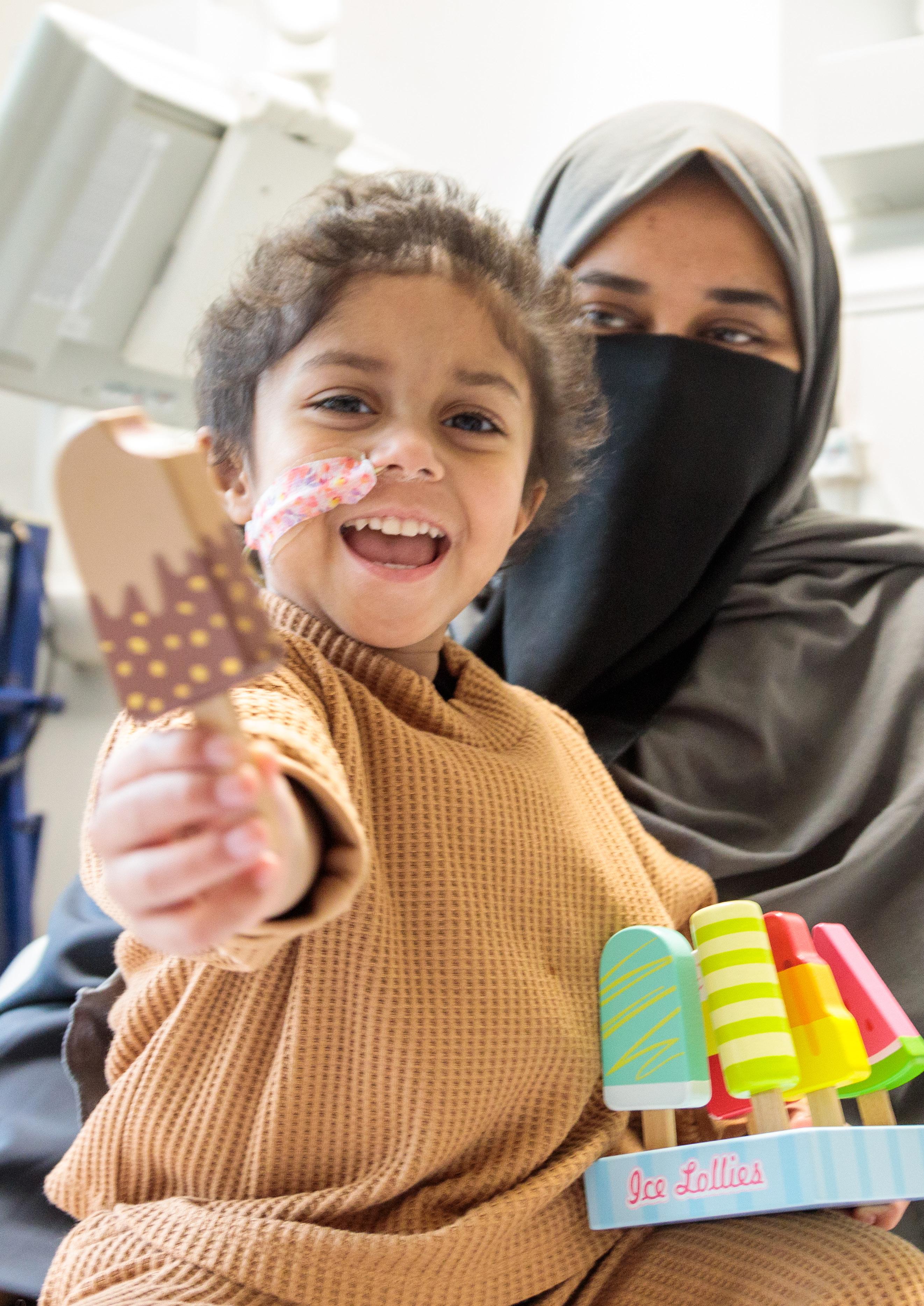
BUILDING A BREAKTHROUGH
Gareth Halls
In November 2020, my youngest daughter, Sienna, came home from nursery with a temperature. Thinking little of it, we gave her some Calpol and assumed that COVID-19 had finally caught us. But over the next few days, Sienna became incredibly unwell – she was vomiting, and had a fever and the shakes.

With her fever still not going down, we decided to take Sienna to A&E. There, a doctor took me to a quiet part of the ward and said they suspected she had leukaemia. Even now, I feel sick thinking about it. It was devastating, and we felt completely broken. The next morning, we were transferred to GOSH and were very lucky to have Doctor Laura Roe, who was so kind when explaining everything to us.
Following more tests, Sienna was diagnosed with acute lymphoblastic leukaemia (ALL). It was explained that treatment would last for two and a half years, and the first six months would be very intensive, with several different chemotherapies given alongside regular steroids and various procedures.

It was stressful and traumatic to witness. Sienna was only four years old and was away from her mummy and big sister. She was so distressed, but the GOSH team were phenomenal with her and with me.
We currently visit GOSH every three months. When we’re there she has the best time and absolutely worships Jennie, the Play Specialist. We feel truly blessed to have her and so many of the hospital staff in our lives.

Going through cancer as a family is not just about physical health – it’s about mental and emotional health, too. You run on adrenalin most of the time, so it’s hard to make space for yourself. The new spaces that are proposed for the Children’s Cancer
 GOSH dad and TeamGOSH 2023
TCS London Marathon runner
GOSH dad and TeamGOSH 2023
TCS London Marathon runner
22 PIONEER
Going through cancer as a family is not just about physical health – it’s about mental and emotional health, too. The new spaces that are proposed for the Children’s Cancer Centre will make such a difference to the whole family.
The new Children’s Cancer Centre at GOSH will help to save more children’s lives. But first, we need to build it. Pioneer meets four people each helping to make this ambitious project a reality, from running a marathon to fundraising with colleagues.


Centre will make such a difference to the whole family.
For example, dedicated family rooms for peer support. Children can learn so much from one another, so even allowing Sienna's sister, Lois, to be around other children who are poorly or siblings she can relate to would help massively.
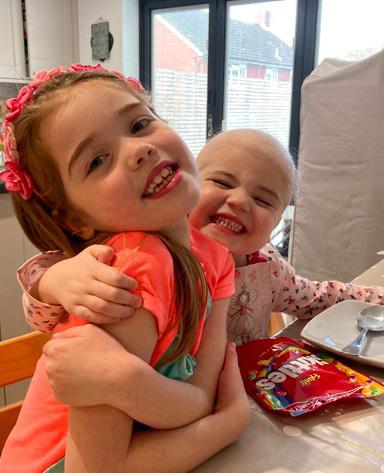
Having an integrated, dedicated research facility will be a step closer to finding kinder, more personalised treatments, that will allow children to thrive, not just survive. Some of the medicines used to tackle children’s cancers today are nearly 60 years old!
Fundraising for GOSH Charity is the best investment you can ever make, which is why I’m running the 2023
TCS London Marathon for the charity. By raising money, you’re giving children the best chance at life, as well as improving their quality of life. You can’t put a price on that.
PIONEER 23
Gareth with his wife Jenny and daughters Lois (left) and Sienna
Rosana Elias
Head of Sustainability at Premier Inn and Restaurants, a GOSH Charity corporate partner
Our partnership with GOSH Charity is something we’re hugely proud of. We’ve worked together for more than 10 years and have raised over £21 million to date. It’s amazing to watch this relationship grow and to see the huge impact that our fundraising has. To watch projects such as the Sight and Sound Centre, supported by Premier Inn and the Premier Inn Clinical Building come to fruition has been particularly powerful.
Last year, we held a vote to ask our colleagues which charity they wanted to fundraise for going forwards and GOSH Charity came out on top, making it clear that the hospital is something we really care about.
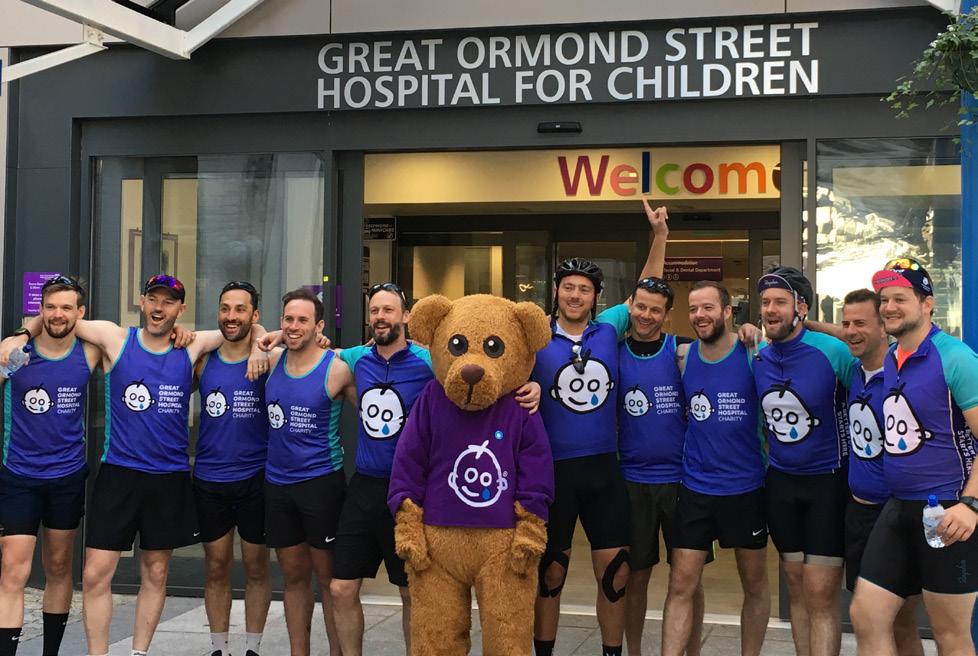
Children come from all across the UK to be treated at GOSH, and as a nationwide brand, we know that the charity supports families within our communities, and indeed some of the families within our teams.
We have met lots of GOSH families over the years and know that GOSH does an excellent job of supporting them, which is one of the reasons why our teams throw so much energy behind fundraising. I think this will only increase with the development of the Children’s Cancer Centre, as the facility will be uniquely placed to support some of the most seriously ill patients and ensure that fewer children are impacted so severely by cancer in the future.
Will Bayley MBE
Paralympic table tennis champion and former GOSH patient
I was born with arthrogryposis, which is a rare joint condition that affects all four of my limbs. This meant I underwent numerous operations at GOSH from birth, and subsequently throughout my childhood.
When I was seven years old, I returned to GOSH for chemotherapy after being diagnosed with nonHodgkin lymphoma, a type of cancer that develops in the immune system. It was while recovering from cancer that my grandmother bought me my first table tennis table!
Like many, I have a connection to GOSH which makes our partnership even more special to me. My grandmother and aunt were both nurses at the hospital, and my younger aunt was treated and sadly passed away there as a child. The work the hospital does to support children and their families through these experiences is so important, and something that I am proud to support in such a significant way.
Fundraising for GOSH Charity also creates a unique sense of pride and camaraderie, as our nearly 35,000-strong team works together to raise money for a cause where we can make a real difference. For some people, it’s a reason to come to work in the morning.
The hospital was like a second home for me. I basically grew up there, spending my whole childhood going back and forth, and the staff did so much for me. That’s why I’m so passionate about supporting GOSH Charity.
I have so many amazing memories from my time at GOSH. I remember the nurses being happy and always making me feel safe. I remember going to Cubs and Scouts and doing my schoolwork in the hospital. And I remember playing with the other children on my ward in the play area.
The new Children’s Cancer Centre will be amazing for so many children. Going through cancer is a
24 PIONEER
A Premier Inn and Restaurants team raising money for GOSH Charity
Dr Dermot Smurfit
Founder of the Friendship Ball, in support of GOSH Charity and the Children’s Health Foundation
Like many people who get involved with Great Ormond Street, for me it came through personal experience. It started on a Saturday about 12 years ago. My then 10-year-old son, Charlie, had a few bruises on his leg that he said came from playing football. I thought nothing of it until my wife came home two hours later and asked him to take his top off – he had bruising all over his body, which obviously didn't come from football.
We took him to the doctor that day. They did a few tests, and a few hours later the phone rang. That's when the doctor told us they thought Charlie had leukaemia and suggested we take him to hospital straightaway. We went to St Mary’s Hospital in Paddington, where they did some more tests and told us Charlie had T-cell leukaemia. An ambulance was provided, and we ended up at GOSH. That was the start of it.
My first impression of the hospital came from Dr Nick Goulden, who assured us that Charlie would get the best treatment possible and the best drugs the world had to offer at Great Ormond Street. Years ago, leukaemia was a death sentence. But three-and-ahalf-years later Charlie was cured. It was fantastic.
One thing that really impressed me about GOSH was
the knowledge sharing among oncology doctors all around the world. As soon as they learned something, they would share it, and they would also take knowledge from other places.
When Charlie’s treatment started to come to an end, I asked, “How do I pay for all this?” and I was told I didn’t need to, that it was all covered by the NHS. That’s when I decided I would find some other way of paying, which is why I started the Friendship Ball. The event raises money for GOSH Charity and for the Children’s Health Foundation in Dublin. It has raised £4.2 million since its inception in 2012.
When you’re treated at Great Ormond Street, you get amazing care from everyone who works there. It gives me huge satisfaction to have found a way to give back.
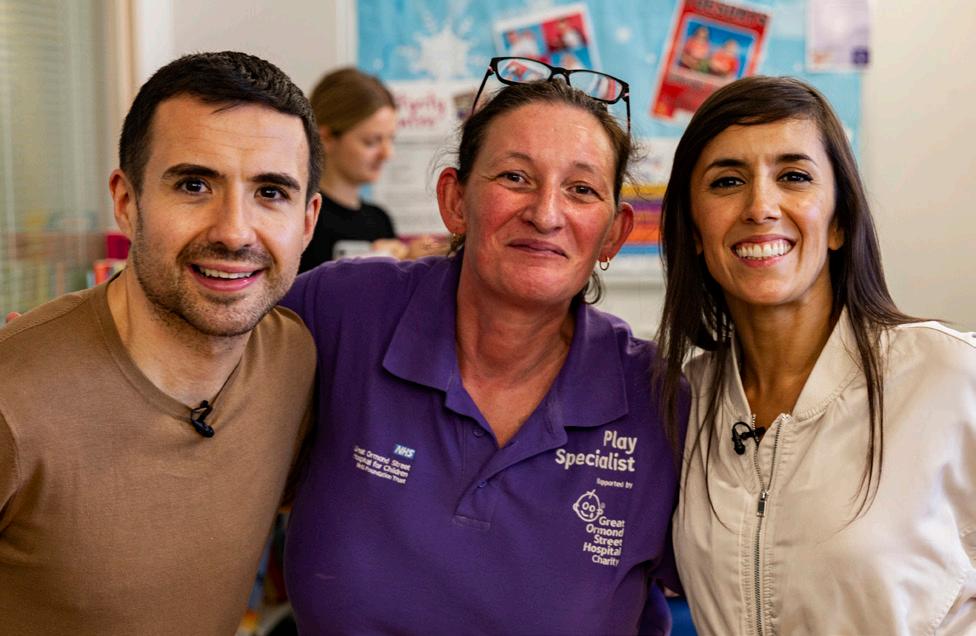
really difficult time for the whole family, and everyone deserves the best treatments and as much support as possible. I’m proud to have received my cancer treatment at GOSH, and I’m proud that the staff continue to go above and beyond for patients like me.
Fundraising for GOSH Charity makes a huge difference to the lives of children and their families. When I was in hospital, little things like having games on the ward that we could all play together really helped us through our treatment and recovery. It gave us something else to focus on. By donating to GOSH Charity, you’re helping to give children a better quality of life, as well as a better chance at life. •
 Will and Strictly Come Dancing partner Janette with GOSH Play Specialist Sacha
Will and Strictly Come Dancing partner Janette with GOSH Play Specialist Sacha
THE PIONEER INTERVIEW
You’ve been Headteacher at the Children’s Hospital School at GOSH and University College Hospital for more than a decade. What is it like? It’s challenging and thought provoking; no day is the same. Looking at the difference we make and the positive outcomes for children, it’s incredible. I love it.
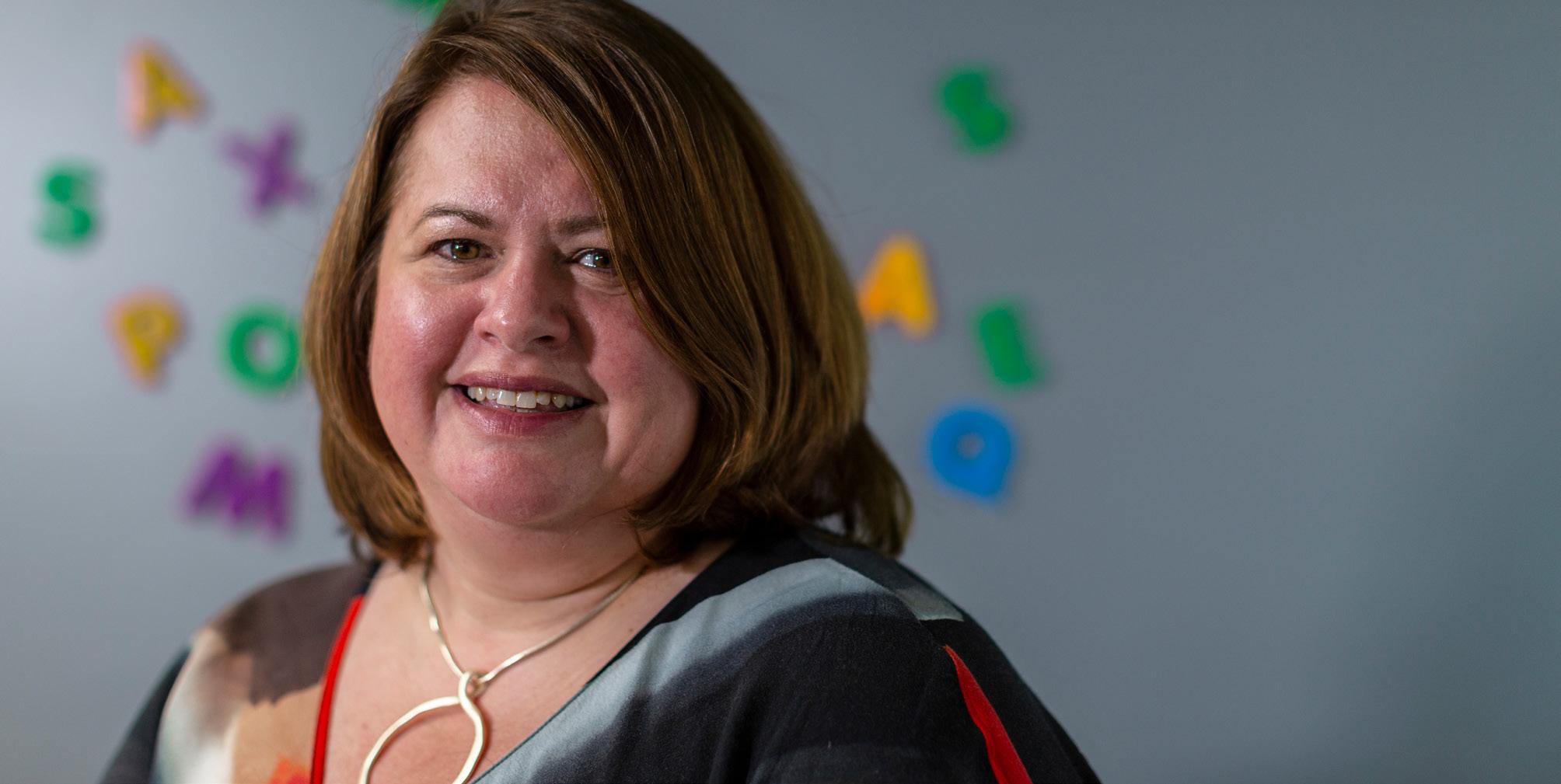
What’s a typical day like for your team?
We start teaching on the wards at around 10am, but teachers begin preparing anytime from 8.30am. Each teacher is allocated priority pupils, and they plan a bespoke programme for every child, so even though they’re not teaching a whole class, it’s just as intense. In the school room, what we teach depends on the group of children. We might follow our own curriculum, or we might have
‘themed weeks’ to engage pupils of all ages in a particular topic, such as poetry or STEM.
If a new child has been admitted, a teacher will go and meet the family to get to know them and talk about school. At the end of the day, teachers spend time assessing lessons and recording their observations. They might also have a training session or attend a national meeting. We have a lot of links with colleagues across the UK.
There’s always something different. We’re currently teaching a young person whose family are seeking asylum. The child, who is a teenager, really trusts the teacher and asked them to be there with the interpreter when they were meeting someone from the Home Office.
Access to the GOSH school provides children with a sense of achievement and continuity, as well as social connection. Excitingly, the new Children’s Cancer Centre will include a larger school with upgraded facilities. Headteacher Jayne Franklin takes Pioneer inside the classroom.
26 PIONEER
What role does the school play in hospital life?
We’re there from the start. We’re quite a significant non-clinical role for children and their families. For children, it’s about continuity, enjoyment and achievement. Exam results may be important, and our pupils do take exams while in hospital, but what matters most is progress and a sense of belonging.
The new Children’s Cancer Centre will feature a school with more capacity. What difference will that make? There are lots of paediatric units that have schools, but nothing quite as significant as what we’re doing. We’re designing the school as an integral part of the new building.
The school will be there not just for the Children’s Cancer Centre, but for the whole hospital. It will have more space, so I can appoint more teachers. There will also be space for staff to have private conversations with families and colleagues.
We also want to be really clever with technology, so we can do more across the hospital. And we want to use this technology to help children stay connected with their home schools, perhaps through virtual environments.
Cancer patients are currently taught one-toone on the wards. This tends to be because of their clinical needs – they’re in isolation. One of the key benefits of the new building will be that beds can be brought into the space. So, if a child is well enough, they could come into the school. A lot of children miss the social element of school, so that’s important.
Do you have a favourite teaching memory?
We’ve done sessions in the past where we connect with the outside world. My favourite was a chat with astronaut Tim Peake while he was in space. It’s the best thing I’ve ever done as a teacher. The kids were all involved, and it was incredible. How amazing that we could do that! •
STUDYING AT GOSH
Fifteen-year-old Alexis has been treated at GOSH for an autoimmune disorder since she was seven. An avid learner, she loves attending the hospital school during her stays.

“My first admission to GOSH was for about six weeks when I was first diagnosed in 2015. At that time, I would attend classes in the schoolroom, but more recently all the lessons have been on the ward because of issues around infection.
“In a week I see five different teachers for one-onone lessons – two for English, one for maths, one for science and one for French. The teachers at the GOSH school do a really good job. They work with your home school to make sure you’re covering the right curriculum.
“At the GOSH school, I really enjoy maths, because it’s more of a challenge and the teacher is really nice. I’m a hard worker – I like to get my
homework done and study. I also got into art more because of GOSH. I enjoy drawing and colouring in, which I do with the Play team. In the future, I want to study architecture, which is a mix of art and maths.
“It’s important that children can attend school while at GOSH so they’re not missing out. If I wasn’t doing any schoolwork in hospital, I probably would’ve been way more behind. People don’t understand how I could do schoolwork when I was unwell, but GOSH is different to other hospitals. I really enjoyed the schooling I was able to have while I was there.”
PIONEER 27
Alexis learning at GOSH
REVOLUTIONARY RESEARCH


Researchers have developed a breakthrough treatment for previously incurable leukaemia, with support from GOSH Charity.
In May 2022, 13-year-old Alyssa became the first reported patient in the world to receive base-edited T-cells to treat her ‘incurable’ leukaemia. This was thanks to a team of researchers at GOSH, in collaboration with the UCL Great Ormond Street Institute of Child Health (UCL GOS ICH).
The cells were manufactured as part of a research programme led by Professor Waseem Qasim, Professor of Cell and Gene Therapy at UCL GOS ICH and Consultant Immunologist at GOSH. Thanks, in part, to early funding from GOSH Charity, Professor Qasim and his team have been able to pioneer new CAR T-cell treatments using innovative gene editing techniques. He discusses his life-changing research with Pioneer.

Why did Alyssa have this treatment?
Alyssa came to us with a very difficult type of leukaemia, and the chemotherapy drugs she’d already received were not enough to control the disease. She’d also had a bone marrow transplant previously and unfortunately the disease still came back. At this stage, Alyssa was running out of treatment options, so we looked at trying to create a new treatment for her that would clear up any remaining leukaemia cells in her body.
How does the new therapy work?
We take immune cells (known as T-cells) from a healthy donor into the laboratory, where we change them so they can work against types of leukaemia that are otherwise difficult to treat. We then disarm the cells, so they don’t fight the body’s normal tissue. And we make them invisible to some of the drugs that we’re going to give the patient, so they don’t fight one another while they’re in the body. By doing all of this, and then rearming the cells against leukaemia, we’ve made a living cell treatment.
What happens once the cells are in the body?
After a short course of chemotherapy, we infuse the cells into the body. They find their way across the different tissues, seeking out and destroying any remaining leukaemia cells. This is important because sometimes leukaemia can hide in places like the bone marrow or the lymph glands. And because we’re giving a living treatment, it can seek, find and destroy the remaining disease cells.
What does this breakthrough mean to you?
It’s very exciting because it is the first application of a new technology called base-editing. This allows us to go through the entire DNA of a cell and pick precise regions we want to change in a very efficient manner. Even a few years ago this would have seemed impossible. It’s a great demonstration of how, with expert teams and infrastructure, we can link cuttingedge technologies in the lab with real results in the hospital for patients.
It’s our most sophisticated cell engineering so far and paves the way for other new treatments and ultimately better futures for seriously ill children. We have a unique and special environment here at GOSH and the UCL GOS ICH that allows us to rapidly scale up new technologies. We’re looking forward to continuing our research and bringing it to the patients who need it most.
What impact could this new treatment have?
We have to be realistic; this is just the first step and we’re still learning how to use these new types of technologies. Ideally, we’d like to make it available for larger numbers of patients. We’re going to run a full study over the next two years to treat more patients with this specific condition.
In the future, it might be that we can use this to treat leukaemia before we need to use heavy doses of chemotherapy. Our long-term ambition is to improve the way treatments work, making them safer and less toxic.
28 PIONEER
ALYSSA’S STORY
“When we first found out Alyssa had leukaemia, we heard all the good things,” Kiona remembers. “She had the most common type of leukaemia and 96% of children are cured. It’s just very hard when you are that 4%.
“Because Alyssa’s leukaemia hadn’t responded so well to the chemotherapy, and was quite aggressive, they said we were talking months, rather than years, that she had to live.
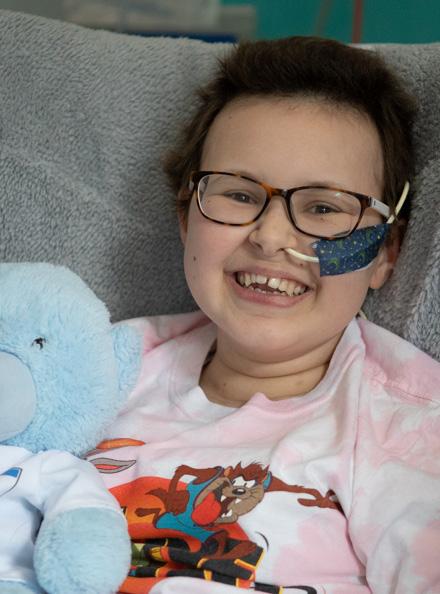
“Then we found out about this trial at GOSH, which was a lifeline. But Alyssa was really tired. She’d already had lots of chemotherapy, she’d had a bone marrow transplant, and she’d spent months in hospital. So we left the decision to Alyssa. And she said she was not ready to give up.”
Alyssa is currently at home, recovering from her treatment. “I’m feeling very happy, because I have had new cells put into me,” she says. “I’m excited to be able to spend time with family and friends, because I haven’t been able to in such a long time. And I’m very honoured. It feels good to have helped other people as well [by participating in the trial].”
“Alyssa is very mature – you can forget she is just a child,” Kiona adds. “Hopefully this can prove the research works and they can offer it to more children. All this needs to have been for something.” •



PIONEER 29
Alyssa and her mum, Kiona, share their experiences.
WHY I SUPPORT THE CHARITY
Cycling track designer Ron Webb left an incredibly generous gift to GOSH Charity in his Will when he passed away in 2020. Pioneer shares his story – and the impact his donation will have.
It was October 2018 when GOSH Charity first came across the name Ron Webb. Ron’s wife, Ingrid, had recently passed away, and the executor of her estate, Ron’s friend Tony, contacted GOSH Charity about a potential gift that might be directed to the charity if it was able to meet certain conditions.
Three months later, Tony rang to say he and Ron would like to come in. The team was told that Ron, who designed more than 60 cycling tracks around the world, including the London 2012 Olympic velodrome track, didn’t want any pageantry. “No bells and whistles, and no wheeling out the best china or prawn sandwiches,” Tony said. On the day, Ron came in, and enjoyed learning more about the hospital, particularly the hospital school and the children who attended.
Following the tour, Ron was clear that GOSH was a worthy cause and a fitting tribute to his late wife’s memory. In March 2019 he gave a discretionary gift of £431,000 from Ingrid’s estate. It was agreed this incredible donation would go towards the Children’s Cancer Centre.
By this time, Ron’s health was failing, and GOSH Charity got special permission to provide a temporary plaque to honour Ingrid’s gift within the current cancer
wards at GOSH. Sadly, the team knew Ron wouldn’t be alive to see the completion of the new centre he was helping to create.
At the end of June 2019, Ron came to GOSH and unveiled the plaque. He was physically very frail, but maintained his spark, and told everyone he was moved by the care and appreciation shown to him and the memory of his wife by the staff there on the day.
A few months later, Tony phoned to let the charity know that Ron had passed away, leaving his residuary estate of around £2.3 million to GOSH Charity.
Ron and Ingrid didn’t have any children of their own, and Ron was never overt in expressing his motivation for giving to GOSH Charity, but it was clear he wanted to do something meaningful. The charity is forever grateful that Ron entrusted his legacy to GOSH.
MAKING A DIFFERENCE
GOSH Charity is incredibly grateful for gifts of any size. Every pound helps to create a better future for seriously ill children, their families and the staff at GOSH, now and into the future.
The charity receives many legacy gifts from people with a connection to the hospital, whether they are a parent whose child was treated at GOSH, or an expatient themselves. And other gifts come from those who chose not to have children, or who lost a child many decades ago.
What all these supporters have in common is that they believe in GOSH and in the power of providing a legacy in their Will. For most people, it is the largest charitable donation they will ever make – and it won’t come to pass until after their death. That’s quite something.
Everyone is different – and we will never know everyone’s motivations – but we do know that by leaving a gift in their Will, Ingrid and Ron will help to build the Children’s Cancer Centre at GOSH and help to beat childhood cancer. •
30 PIONEER
Our supporters believe in the power of providing a legacy in their Wills. For most people, it is the largest charitable donation they will ever make – and it won’t come to pass until after their death. That’s quite something.
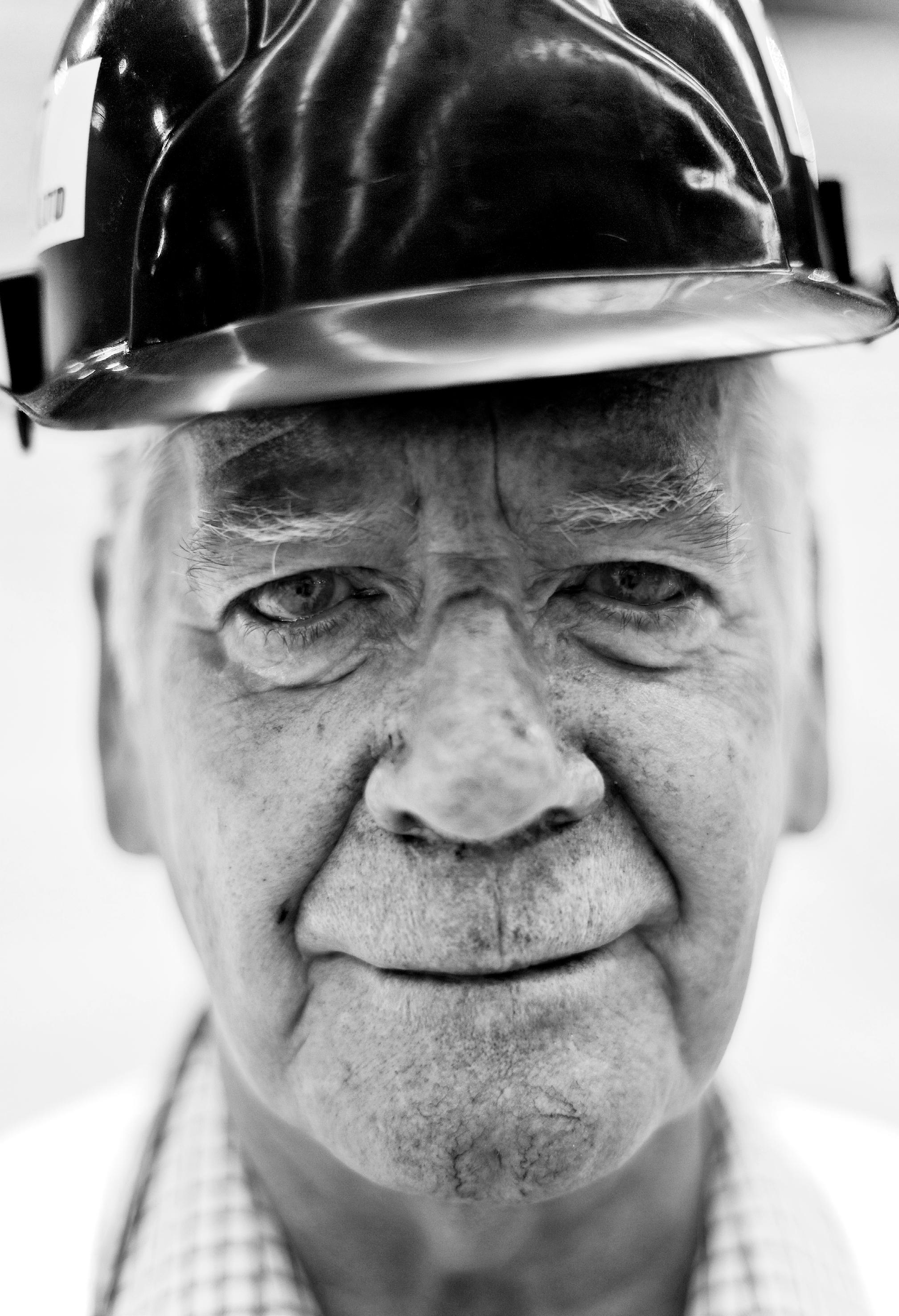
©Cycling Weekly
PIONEER 31
Ron Webb designed more than 60 cycling tracks around the world
GOSH EDUCATION GOES GLOBAL
Supported by GOSH Charity, the GOSH Learning Academy (GLA) first launched in 2019 with the aim of providing education and training to clinicians at GOSH and beyond. As part of this, it created an international education programme, sending local clinicians overseas to help improve treatments and processes.
In 2020, the GLA partnered with Ain Shams University Hospital (ASUH) in Cairo, Egypt to help improve patient outcomes in the hospital’s oncology, haematology and intensive care departments. A key part of the programme involves GOSH teams visiting ASUH, which is one of Cairo’s largest public hospitals, to share their expertise.
The GLA’s Head of Education for Advancing Practice, Emma Sturgess, talks to Pioneer about how the GLA team is working with ASUH on strategies to reduce the length of hospital stays, allowing teams to treat more children, and the successes they’ve had so far.
IMPROVING OUTCOMES
“On our first visit, we wanted to see how we might be able to help, and we noticed that things we take for granted here at GOSH were not always a possibility at ASUH,” Emma explains. “There is often only one sink on each unit, making handwashing between each episode of patient contact impossible, so developing and adapting policies that advocate the use of hand gel and non-touch techniques for IV drug administration was important.
“The team at ASUH were very receptive to our feedback and keen to learn different ways of working. We carried out shared teaching with the medics and nurses, using practical, tangible methods to help with the language barrier. Education packages were a combination of formal lectures and practical demonstrations using equipment and mannequins we took with us. We were able to collaborate with ASUH’s infection control team, who agreed with and endorsed our suggestions.
“We also looked at antimicrobial stewardship, which involves reviewing whether a patient needs antibiotics and, if so, if they are receiving the right
Through the GOSH Learning Academy, GOSH experts are helping to improve outcomes for children around the world.
32 PIONEER
It’s great to go back and see how our knowledge sharing has helped to reduce the risk of infection and improve patient outcomes.
antibiotics for their infection. At GOSH, if a child has an infection, we do a blood test to determine what type of infection it is, and thus which antibiotic will work against it. We usually get the test results back within 24 to 48 hours. At ASUH, they are waiting up to 14 days. Overuse of antibiotics can result in the drugs becoming less effective, and infections are then harder to treat.”
TRANSFORMATIVE RESULTS
“It’s great to go back and see how our knowledge sharing has helped to reduce the risk of infection and improve patient outcomes. We can see improvements in ways of working which may not have been achieved previously in the same capacity.
“Every patient now has a designated trolley at the end of their bed space, meaning that equipment doesn’t move from patient to patient. If someone is very infectious, their bed will be at one end of the room, and other children who are prone to infection will be at the other end or in another room. ASUH is still restricted by staffing numbers, and sometimes patients will all have to be in one room, but it’s about seeing what we can do to reduce the risk of infection as much as possible.”
INTERNATIONAL IMPACT
“Simple interventions have had a huge impact, and it has been incredibly rewarding to witness the institutional change, despite the hospital’s restricted budget. It’s amazing being there, because the staff at ASUH really want to learn and improve, and it also creates new learnings for the GLA, too.

“The children liked seeing us in the hospital. There was one boy who absolutely loved it, and he took a selfie with our team! It’s nice to have these interactions and see the difference they can make.
“This whole experience has made me think about ways in which we can also improve things at GOSH. It makes me ask more questions day-today, like why we do certain things and when we need to do them. I’m excited for what the future holds and to see how our relationship with ASUH continues to evolve.” •
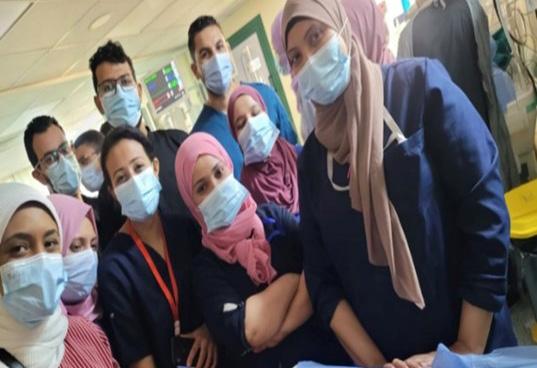
This whole experience has made me think about ways in which we can also improve things at GOSH. I’m excited for what the future holds and to see how our relationship with ASUH continues to evolve.
PIONEER 33
PARENT’S PERSPECTIVE
Maggie-Mae was diagnosed with leukaemia soon after birth and sadly passed away when she was 18 months old. Her mum, Leah, is running the 2023 TCS London Marathon for GOSH Charity in memory of Maggie-Mae. She tells Pioneer their story.

When Maggie was born, she had lots of lumps and nodules throughout her body and in her heart. The doctors at our local hospital weren’t sure what was going on, so when Maggie was three days old, they sent us for an appointment at GOSH’s dermatology ward.
At GOSH, we went to Penguin Ward, where a lovely doctor looked at the nodules and other doctors came and put cannulas in to draw blood. They told us that we wouldn’t be going home that day. Maggie was moved to Elephant Ward, where she had lots of tests and went under general anaesthetic for a biopsy.
At just 11 days old, Maggie was diagnosed with acute myeloid leukaemia. Processing something as huge as being told your tiny baby has cancer was impossible. We were still taking in the news when the anaesthetist told us her heart had stopped and she was in a critical condition. The doctors weren’t sure if she would wake up or if she might have brain damage. I was totally lost for words. It felt like this was something that happened to other people. Babies were born and they were meant to live, they were meant to be happy.
MAGGIE’S TREATMENT
Maggie bounced back and we started focusing on her diagnosis. Chemotherapy is really dangerous for babies under six weeks old, but a very mild dose was the only option. Maggie responded well to the chemotherapy and was home within weeks. We were warned that she might need a longer stay in hospital and more treatment, but a year later Maggie was still at home. Every day I did the best I could to do everything with her and give her the fullest life possible.
Maggie relapsed just days after her first birthday. She got poorly very quickly, and we were taken by ambulance back to GOSH. I still hoped it wasn’t the leukaemia and I didn’t really believe it could be, until the doctors confirmed it. Maggie started chemotherapy and had three successful rounds of treatment. She even got to go home in between, so we had Christmas together as a family.
After chemotherapy, the next step was a bone marrow transplant. Doctors found a match for a bone marrow donor, and after a few false starts Maggie had the operation in February 2018. It went really well. I remember her playing in her Tinkerbell dress on the
34 PIONEER
day of the transplant, and we even had a little party for her. But days later, we found out Maggie’s leukaemia was back. It was incredibly rare for this to happen; the consultant told us it was unheard of.
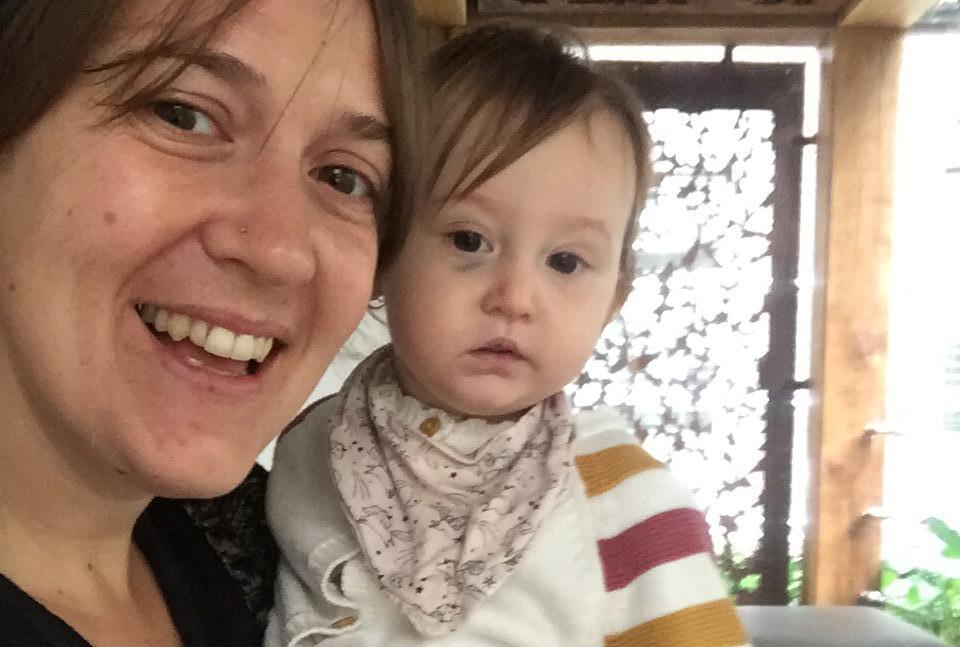



Maggie had always bounced back, so we still hoped for a miracle. But there was nothing the doctors could do, so we focused on getting her home. We curled up on our bed and watched Frozen, Maggie’s favourite film. She was surrounded by the people who loved her and died during the closing credits, just hours after we got home. The song ‘Let it Go’ has a whole new meaning for us now. There was this strange comfort, she was free.
FUNDRAISING FOR GOSH CHARITY
For me, fundraising is Maggie’s legacy. It allows me to bring Maggie forward with me and keep her in my life in a healthy way. It is incredibly healing to be able to channel my feelings and energy a positive way. Since Maggie died, we’ve raised around £30,000 for GOSH Charity.

Childhood cancer is common, yet there’s a shocking difference in the amount of funding going to that, compared to adults with the disease. Time is of the essence with cancer and GOSH’s work and research is life changing. I’m hoping that the new Children’s Cancer Centre at GOSH will [lead to] kinder, more effective cancer treatments for children.
A MARATHON EFFORT
Running is my ‘Maggie time’. I dedicate that time to her, and I feel more connected with her. I should have a six-year-old running around, and so although she’s not physically here, it’s nice to have her as part of my routine and my life.
It was a one in five million chance that Maggie would be born with leukaemia and the fact we got 18 months with her was all due to GOSH. Thanks to the hospital and its staff, Maggie didn’t die at 11 days old. Thanks to them, we got the opportunity to know her and to have time with her. That is why I’m running for GOSH, so the staff can keep performing miracles. •
PIONEER 35
Thanks to the hospital and its staff, we got the opportunity to know Maggie and to have time with her. That is why I’m running for GOSH, so the staff can keep performing miracles.
Great Ormond Street Hospital Children’s Charity 40 Bernard Street London WC1N 1LE 020 3841 3131 gosh.org

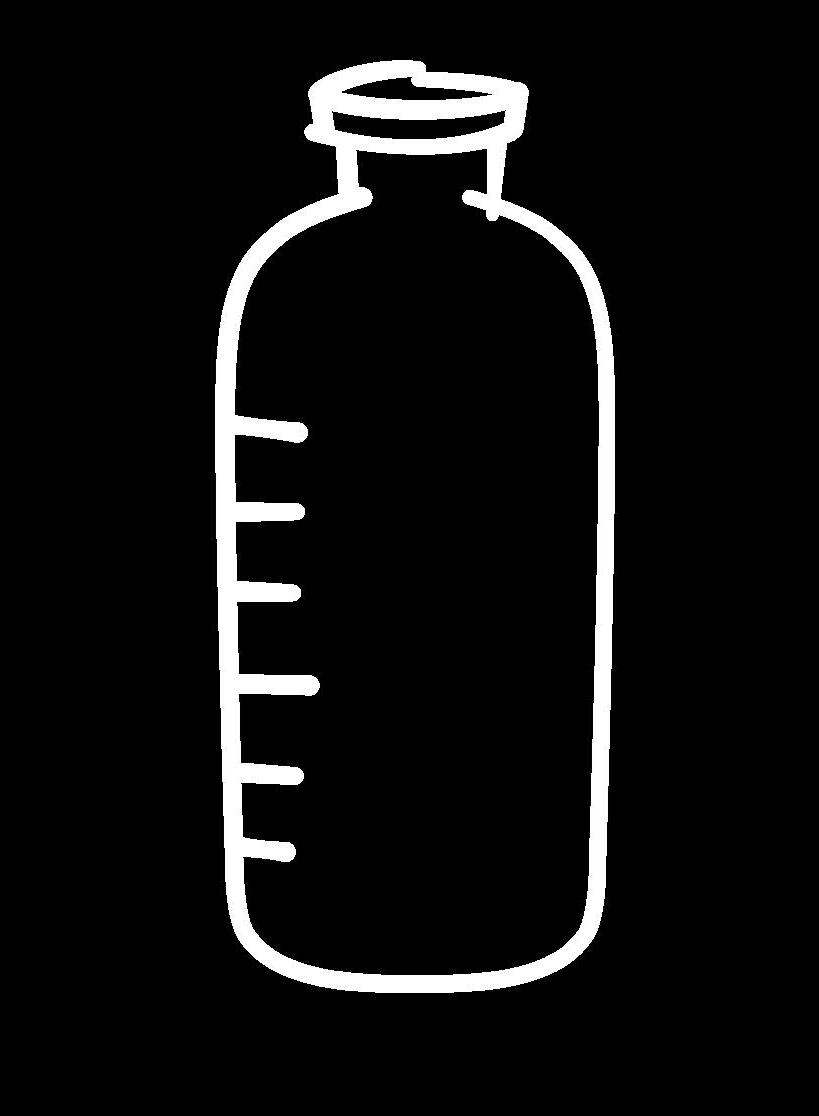

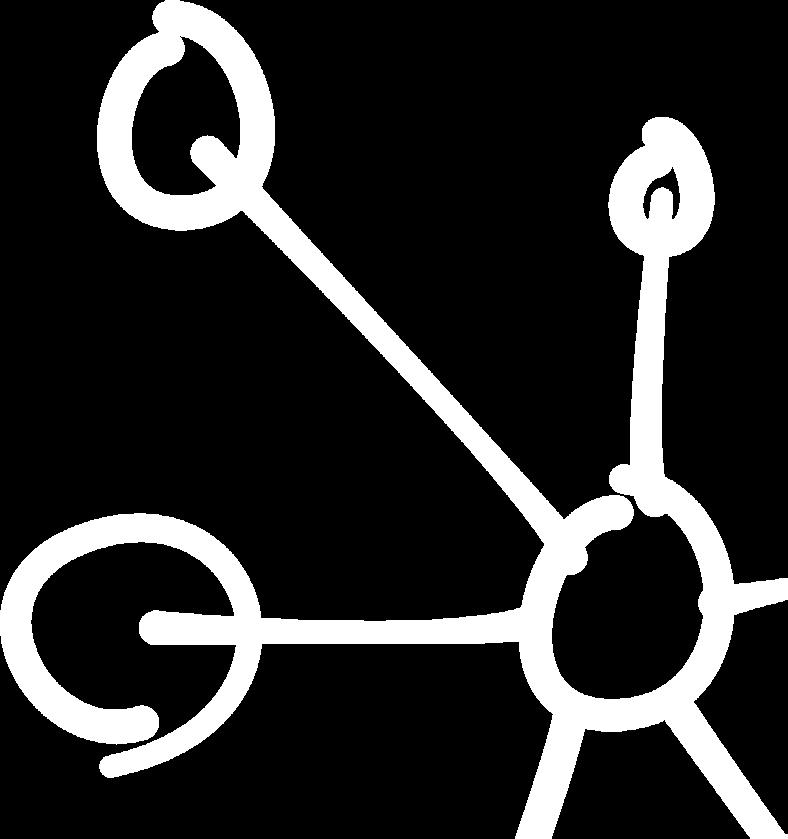


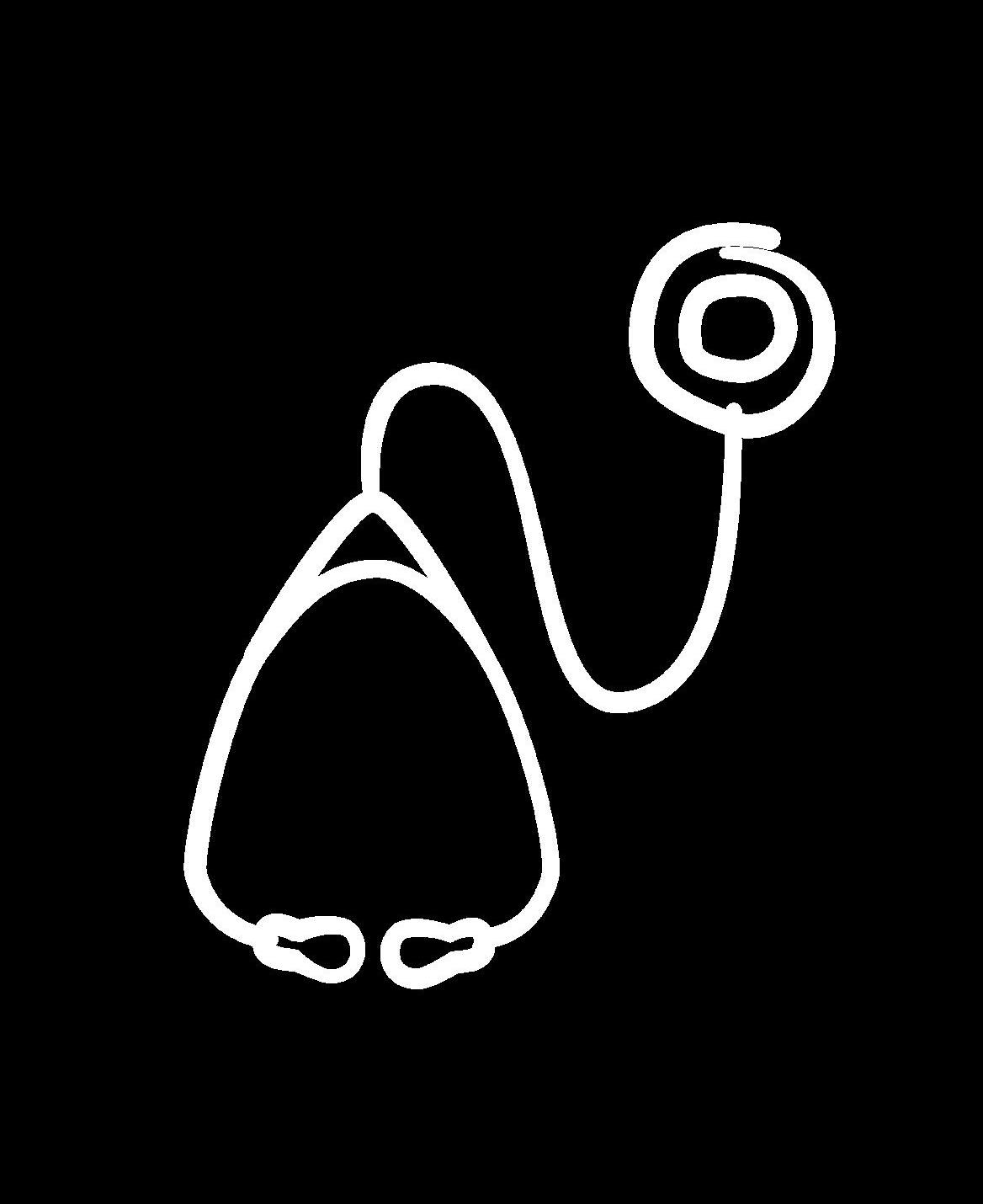


Thank you to all the patients, families and staff who took part in creating this edition of Pioneer.
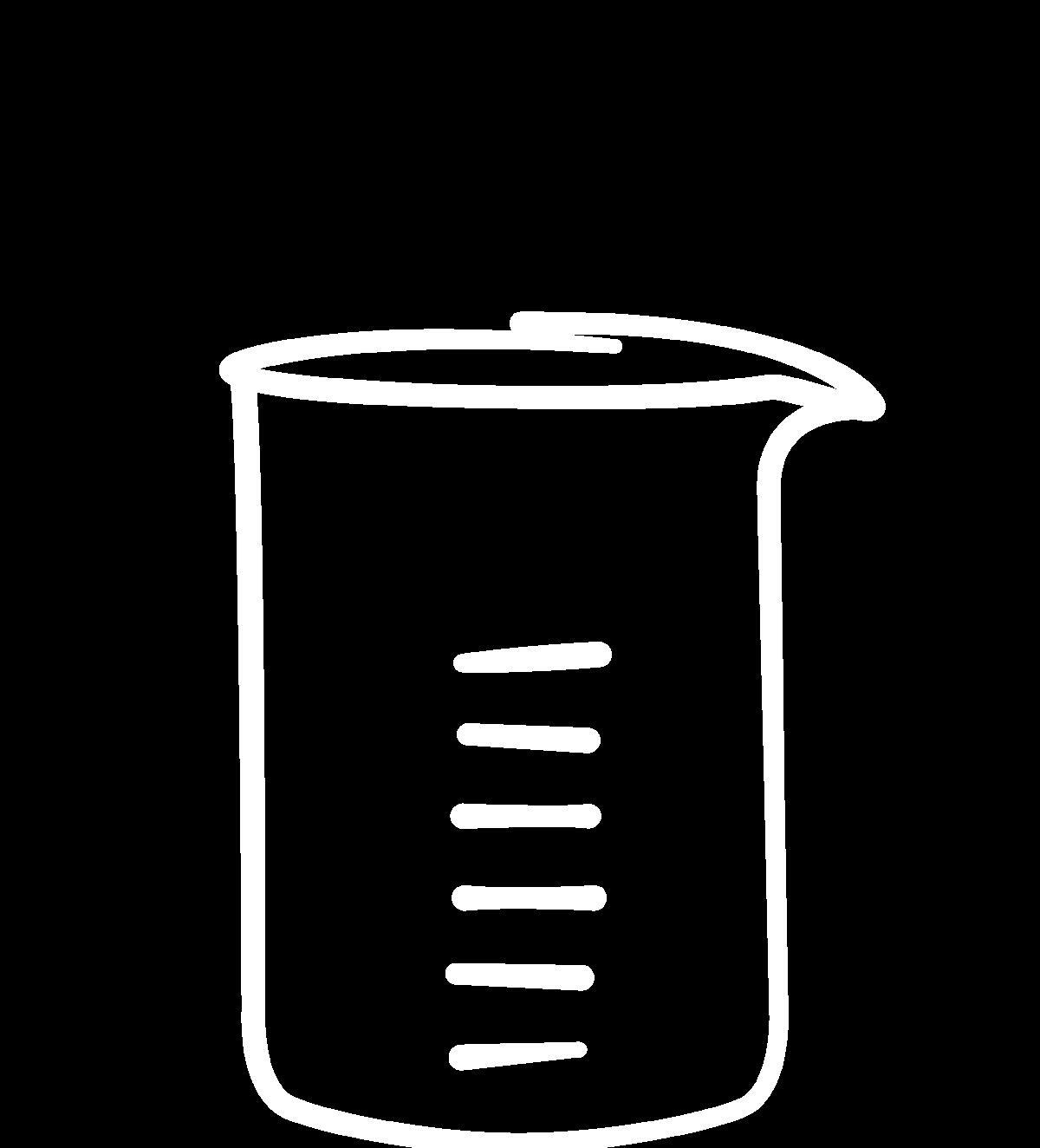


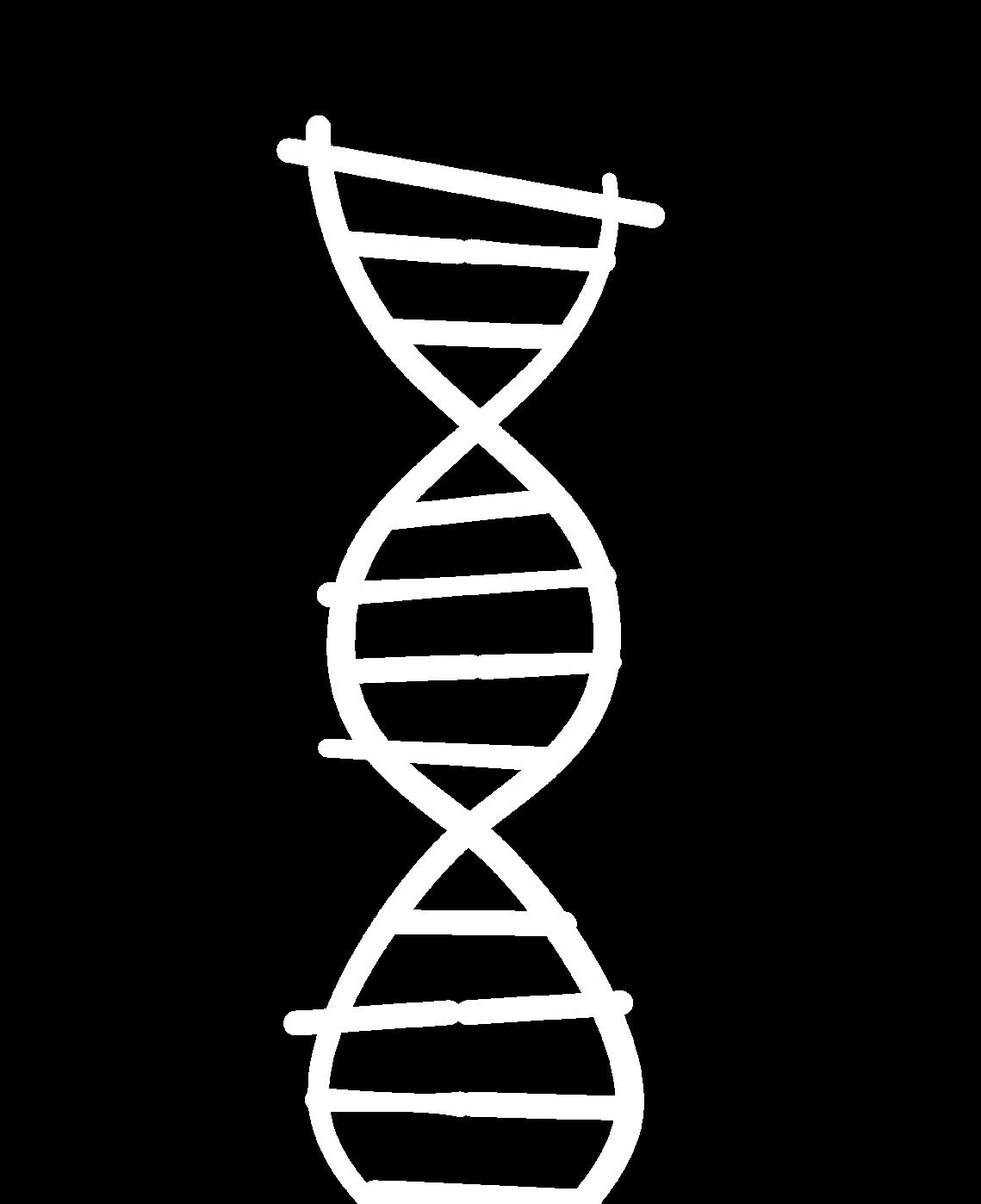
We are sending you this magazine based on our legitimate interest to communicate with you. You can stop receiving it by contacting us at the address or phone number to the left, or emailing supporter.care@gosh.org. Find full details of what information we hold and how we process your data at gosh.org/privacy

Great Ormond Street Hospital Children’s Charity. Registered charity no. 1160024.

















































































 GOSH dad and TeamGOSH 2023
TCS London Marathon runner
GOSH dad and TeamGOSH 2023
TCS London Marathon runner





 Will and Strictly Come Dancing partner Janette with GOSH Play Specialist Sacha
Will and Strictly Come Dancing partner Janette with GOSH Play Specialist Sacha































